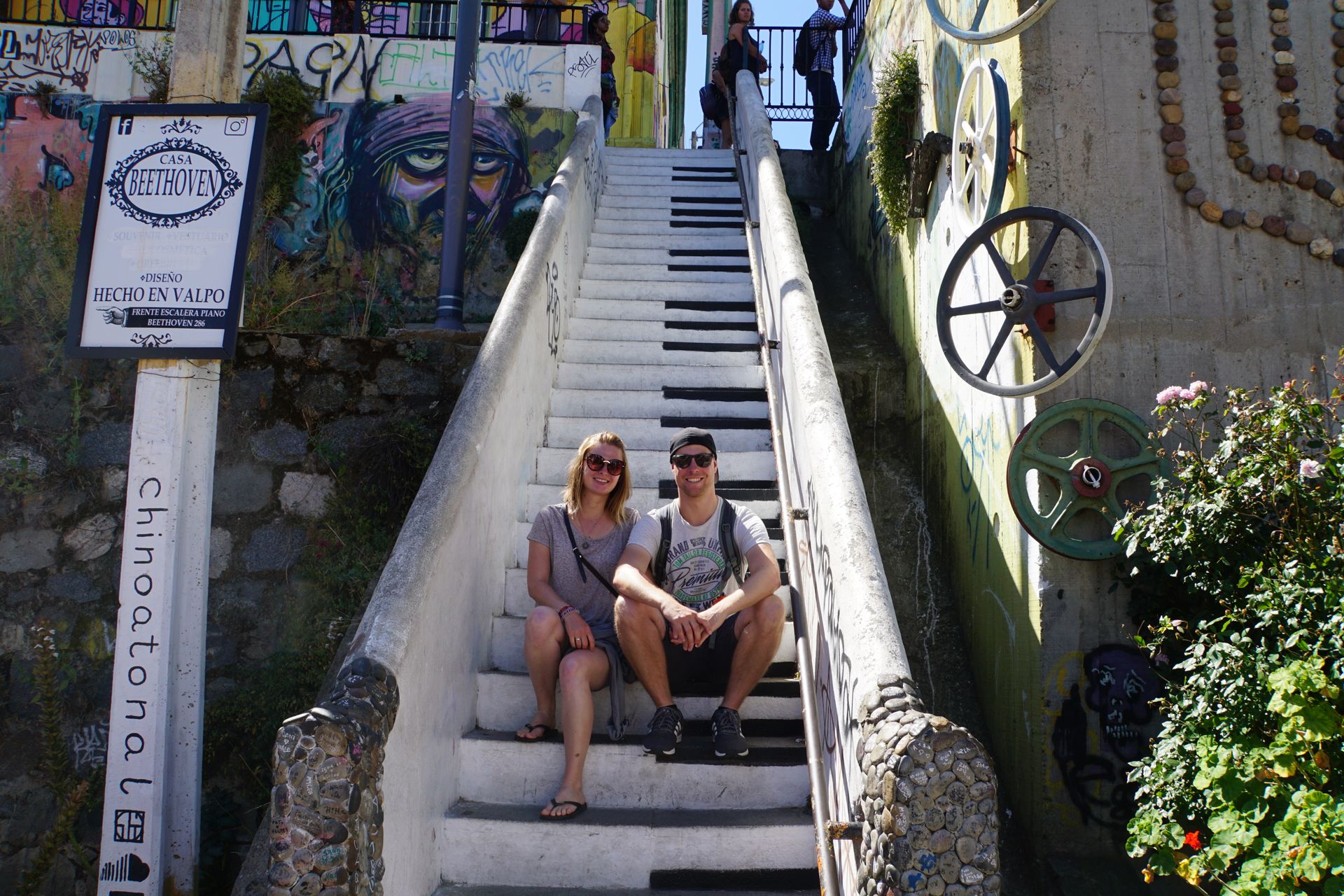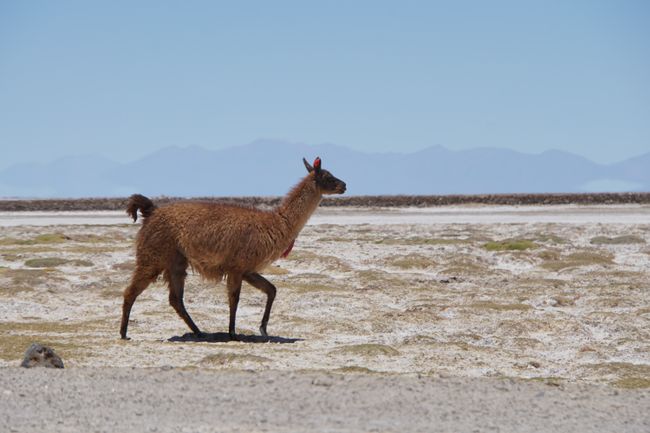La Paz - the highest seat of government in the world.
Објавено: 01.12.2018
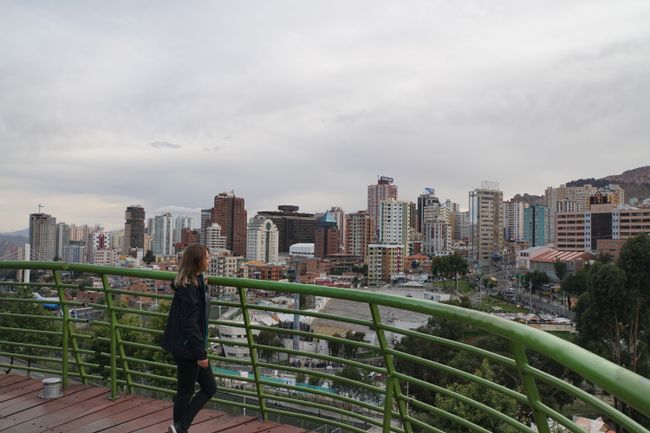
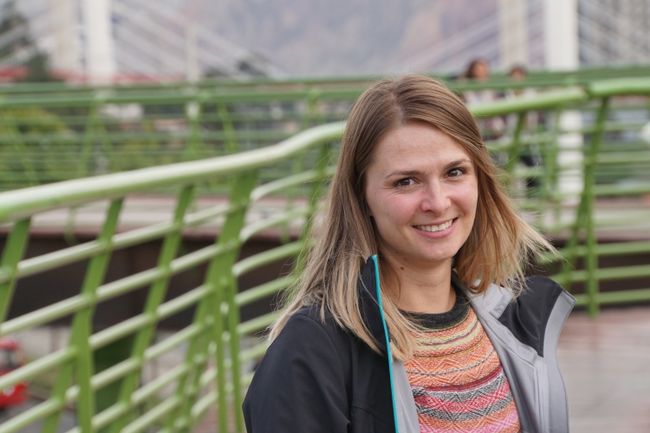
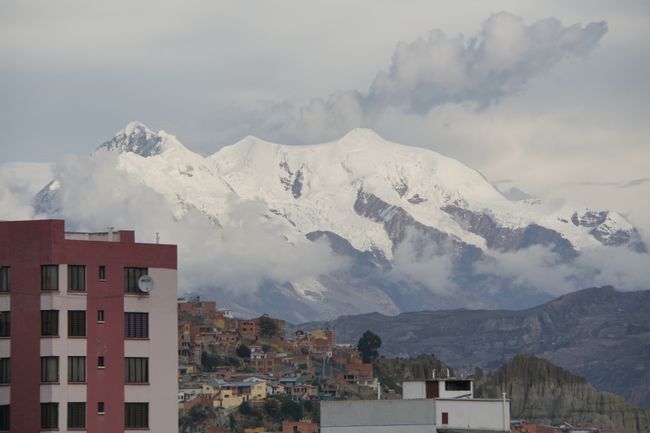
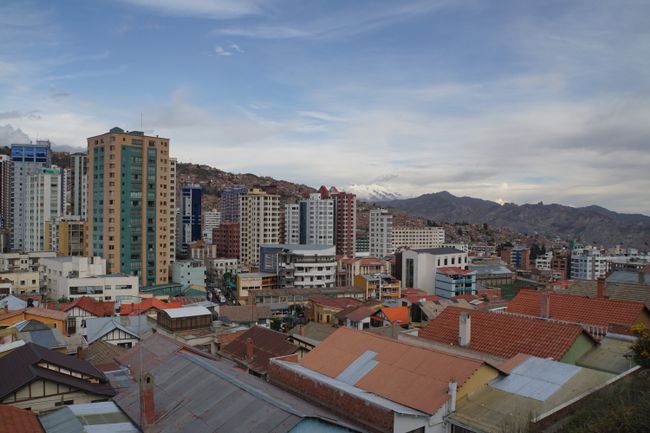

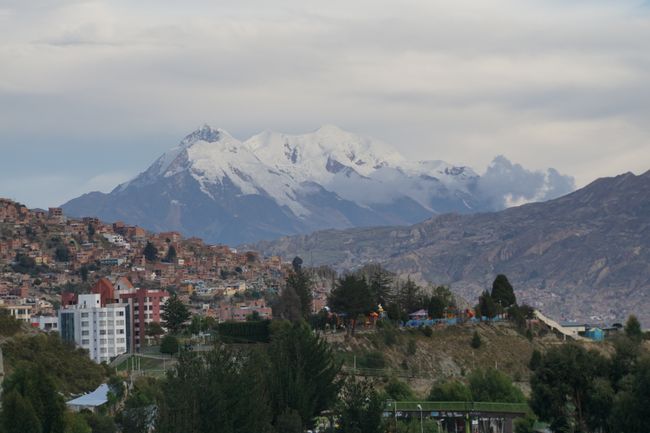
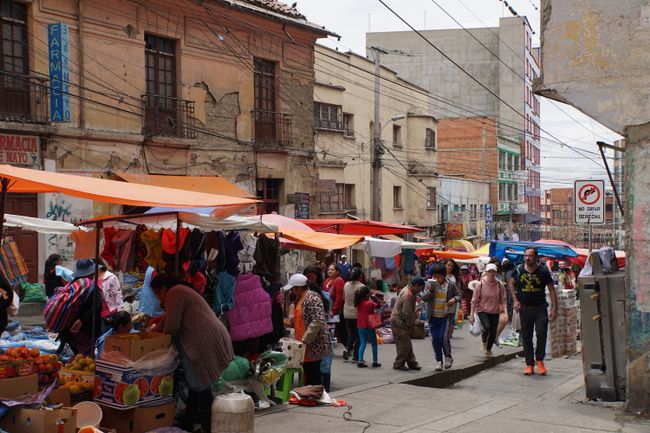
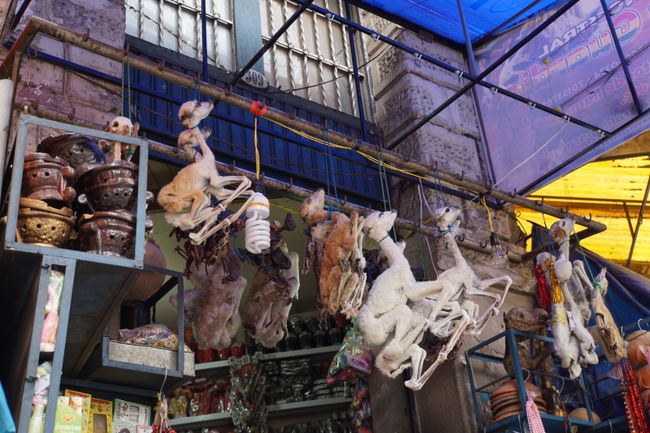
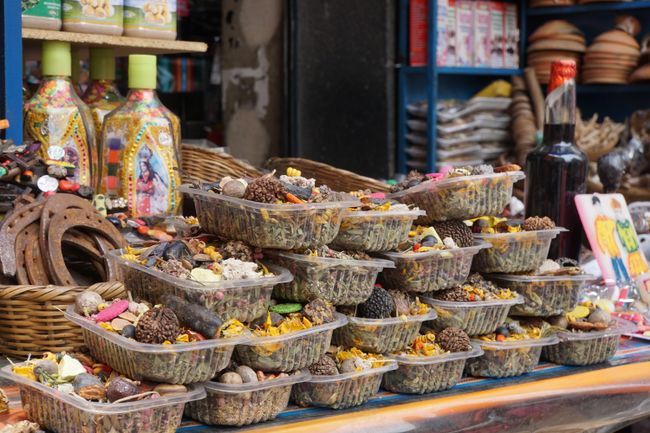
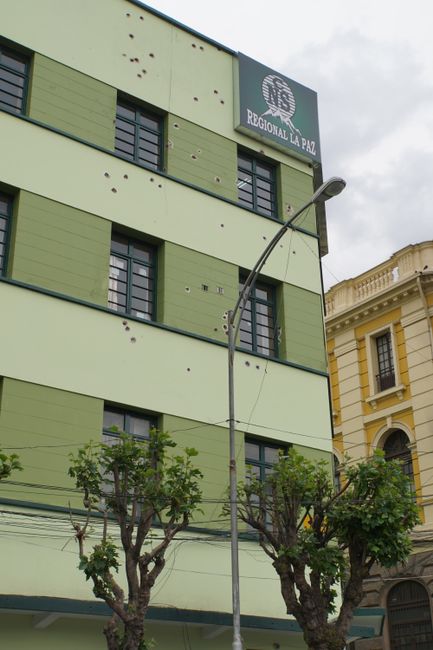
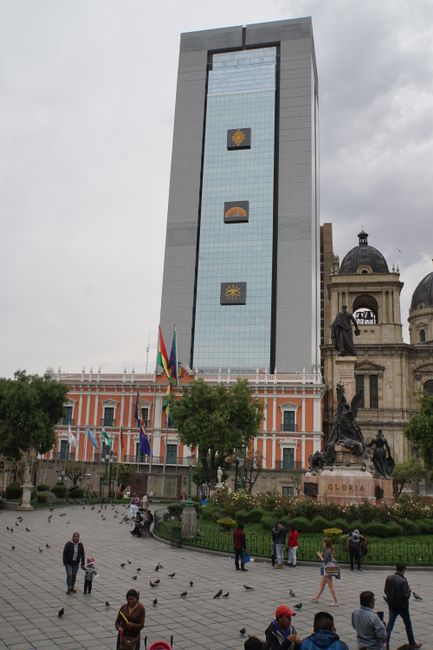
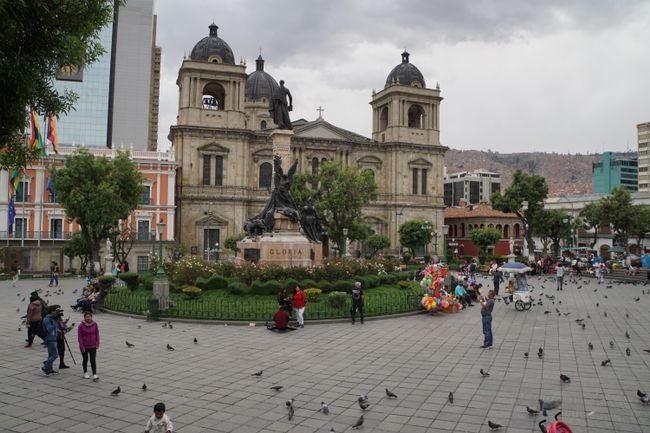
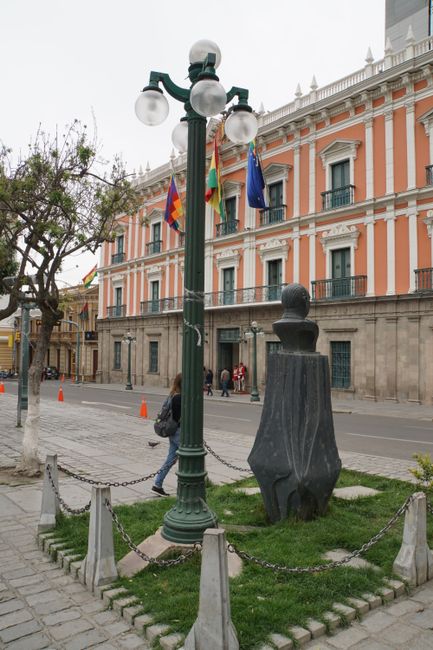
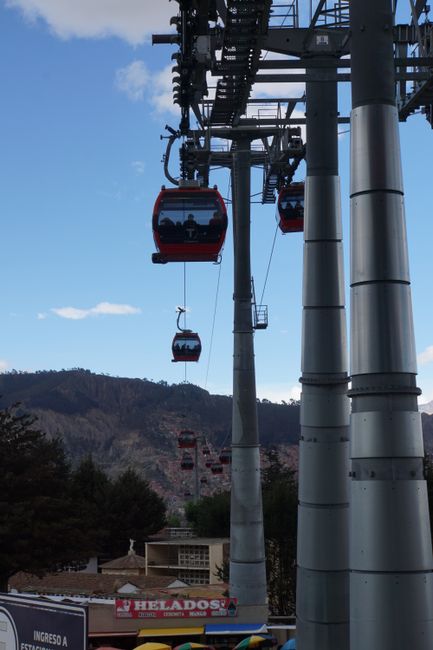
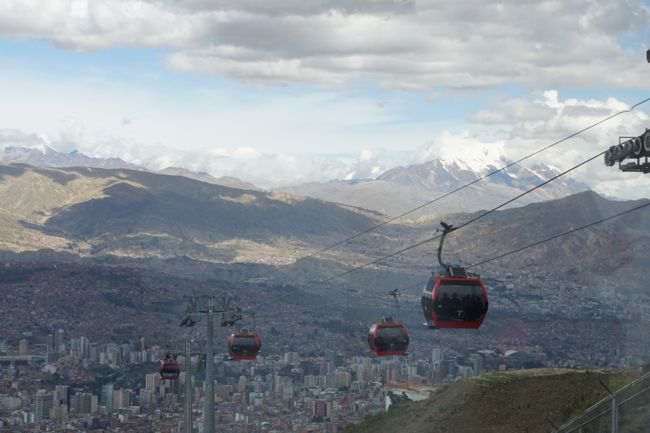
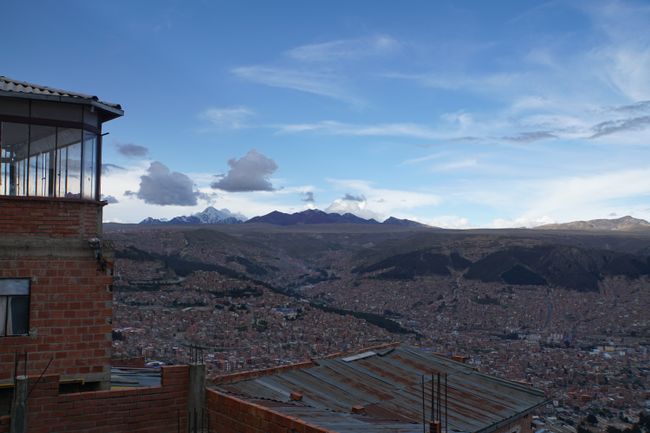
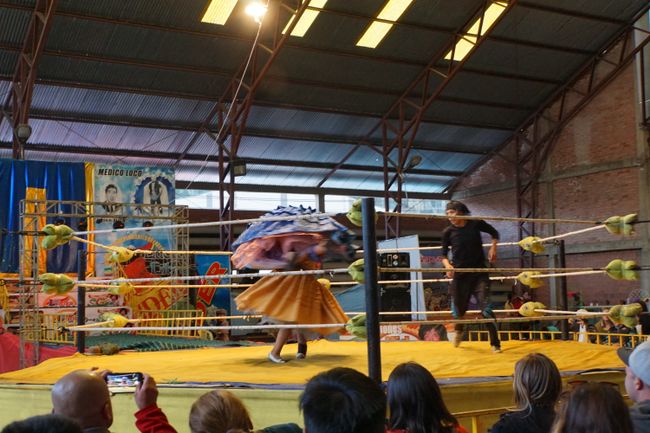
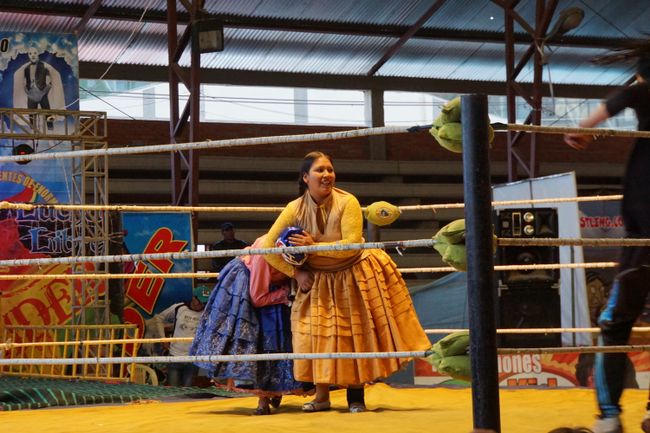
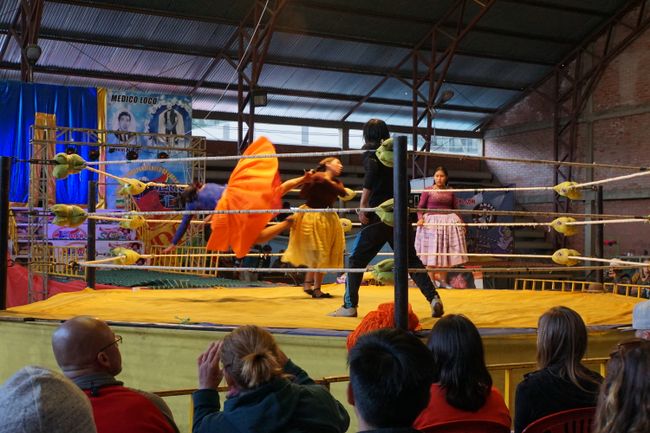
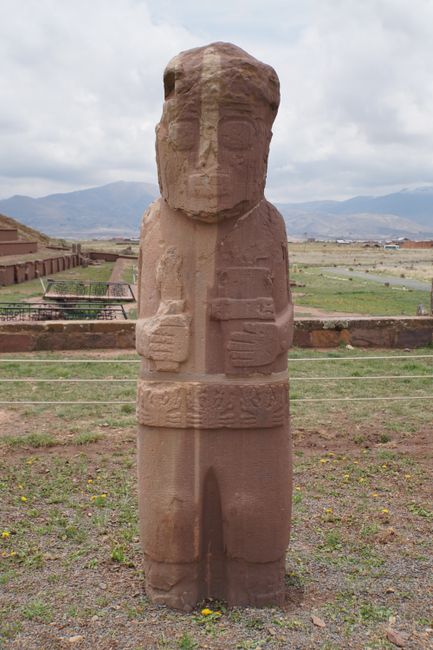
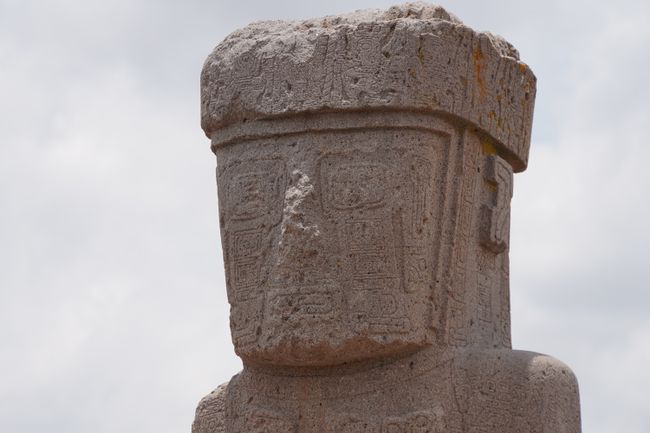
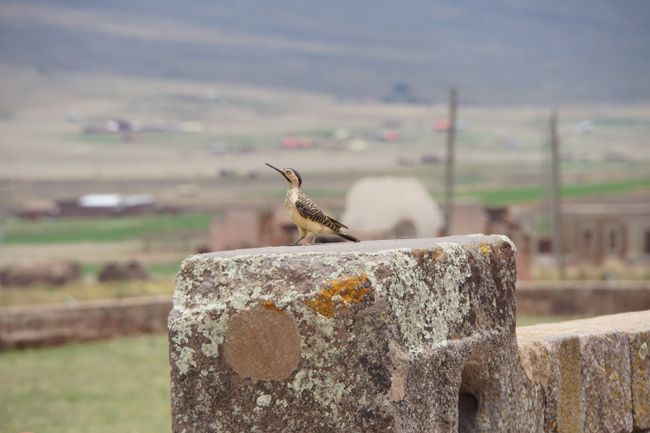
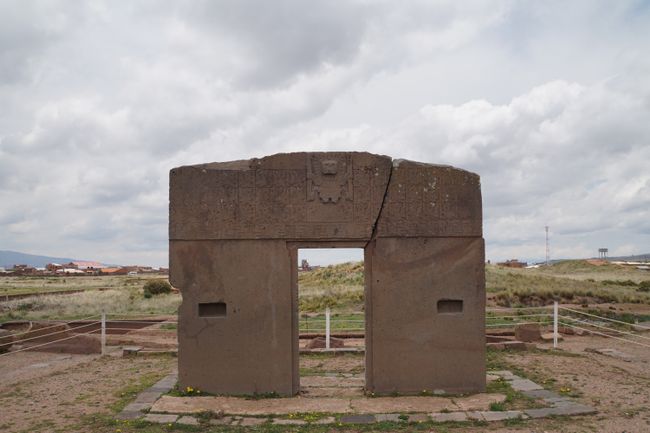
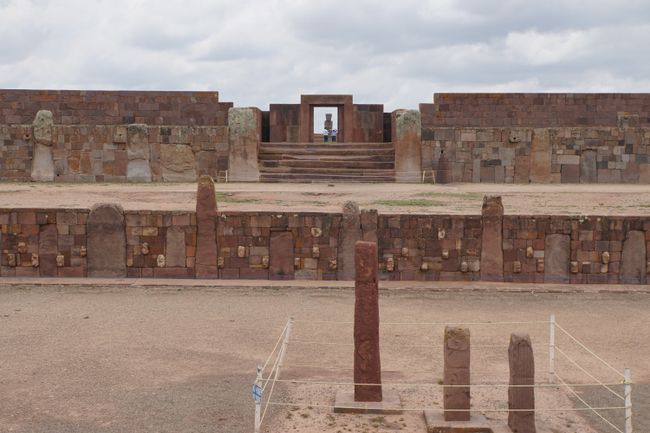
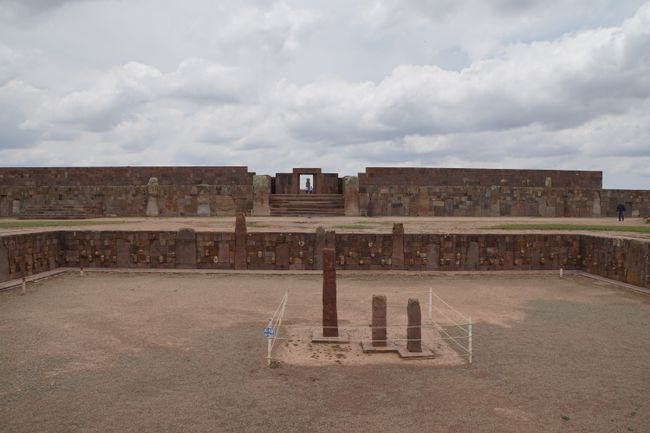
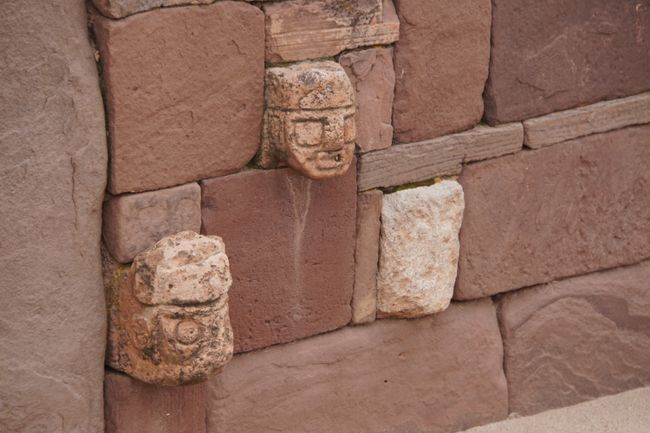
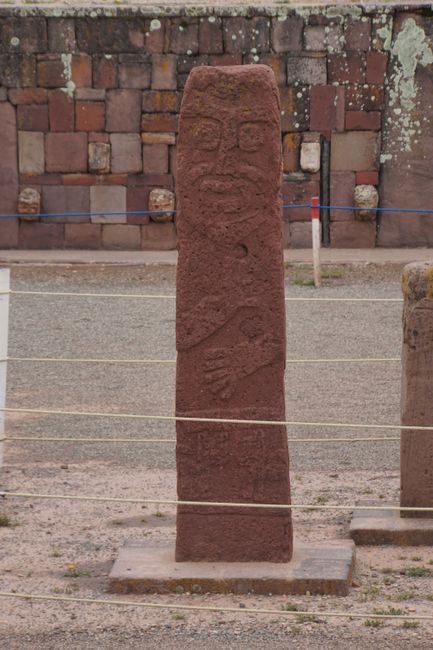
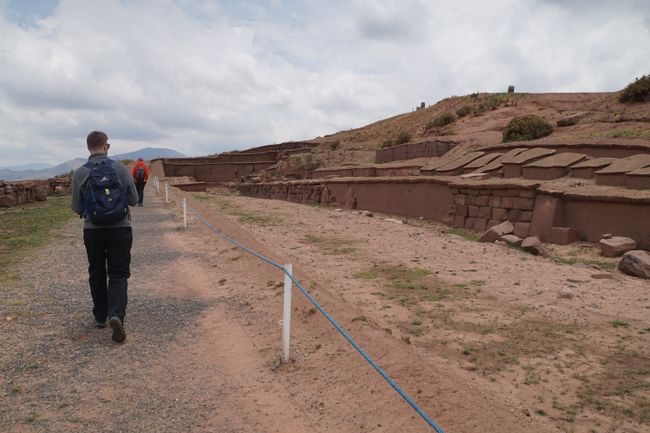
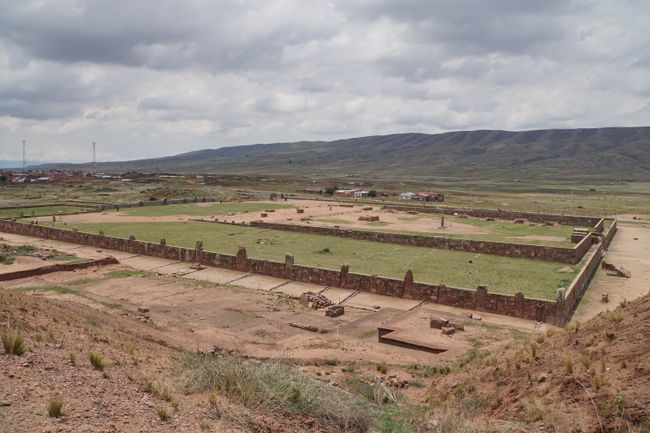
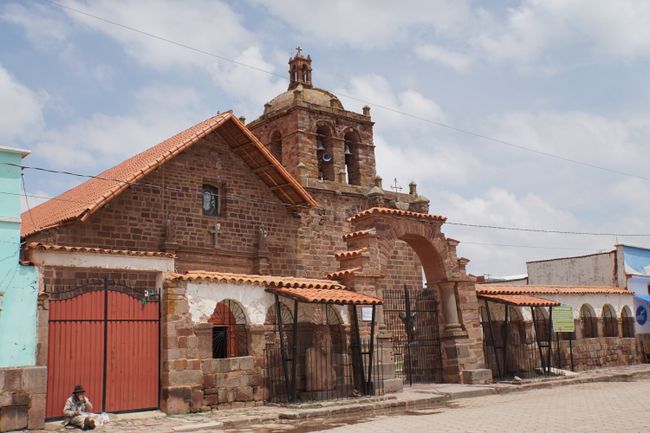
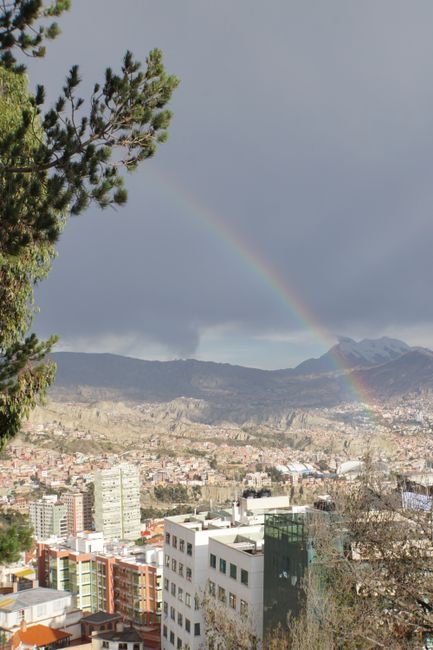
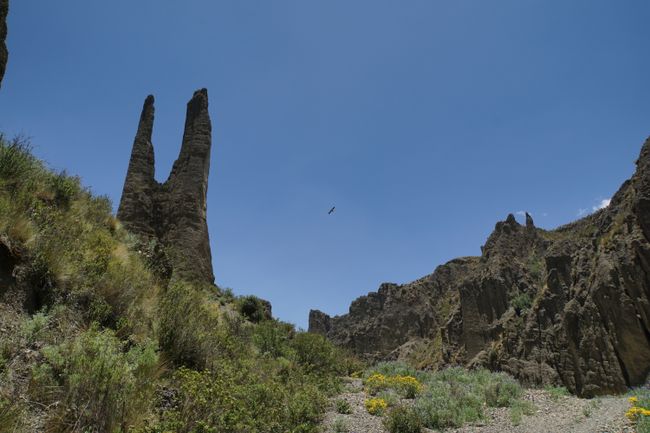
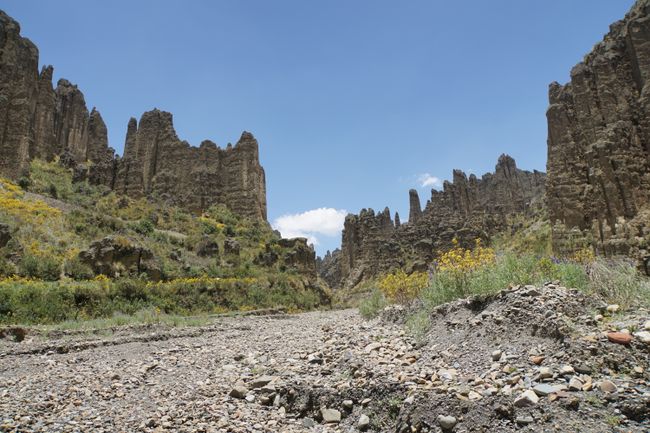
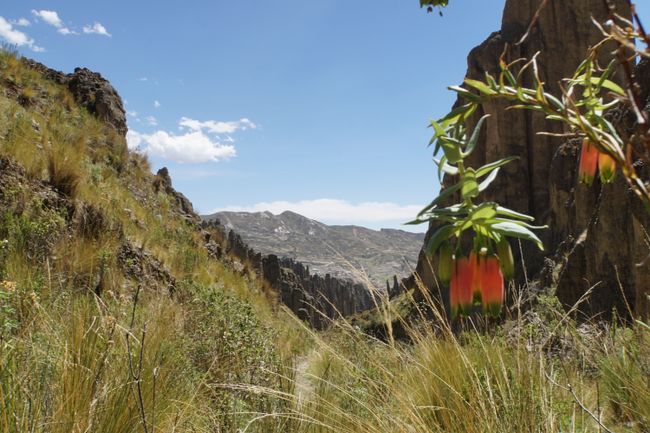
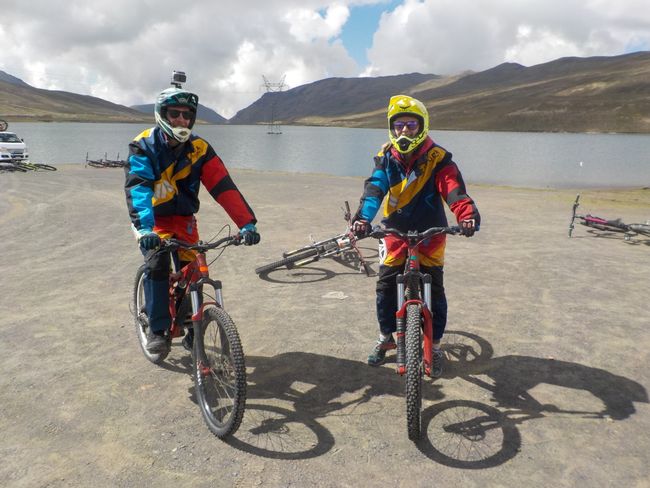
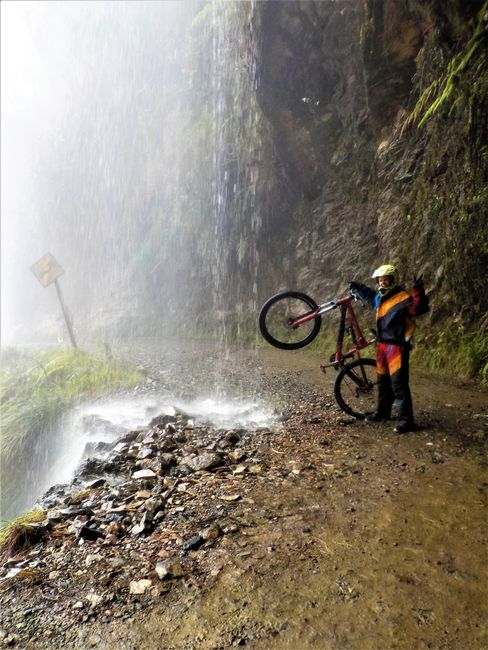
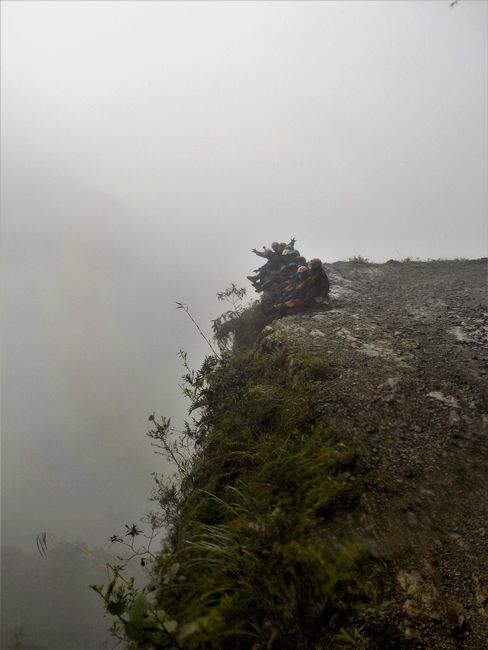
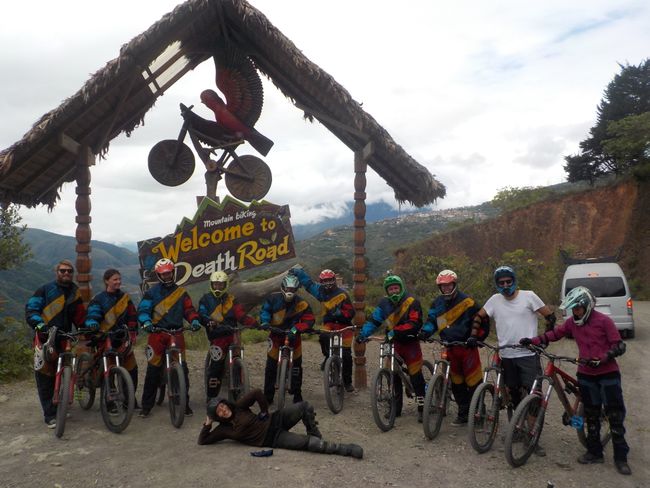
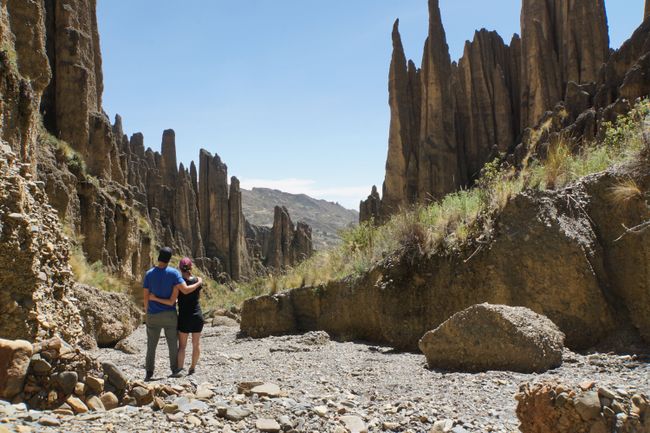
Претплатете се на билтенот
We have finally left Peru behind. After a mammoth journey from the north of Peru (first we took a bus from Huaraz to Lima to Cusco for almost 32 hours), our plane flew from Cusco to El Alto. After just one hour in the air, we could finally enter Bolivia. We made it to the second country on our to-visit list on our world trip! The airport near La Paz is located in El Alto, today's neighboring city and former district of La Paz, and at almost 4,000m above sea level, it is one of the highest airports in the world. Then we take a taxi down to the valley. The first views of La Paz are already very impressive! The city, with its slightly more than 750,000 inhabitants, is literally stuck to the slopes of the Andes. There are 1,000 meters of vertical height difference between the individual neighborhoods on the plateau and those in the basin. This naturally also affects the climate, which is much more pleasant below than at the higher elevation, where the cold Andean wind blows.
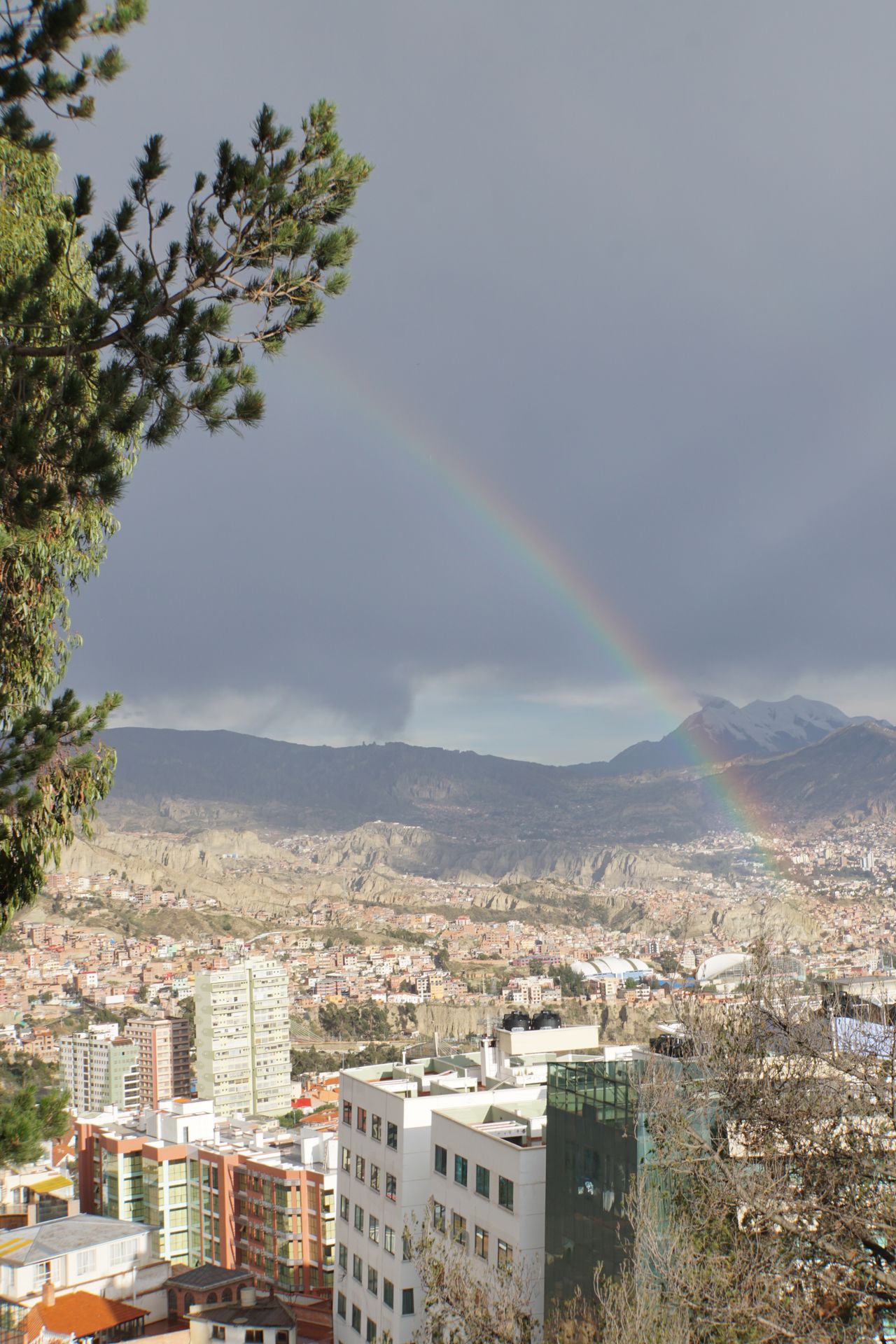
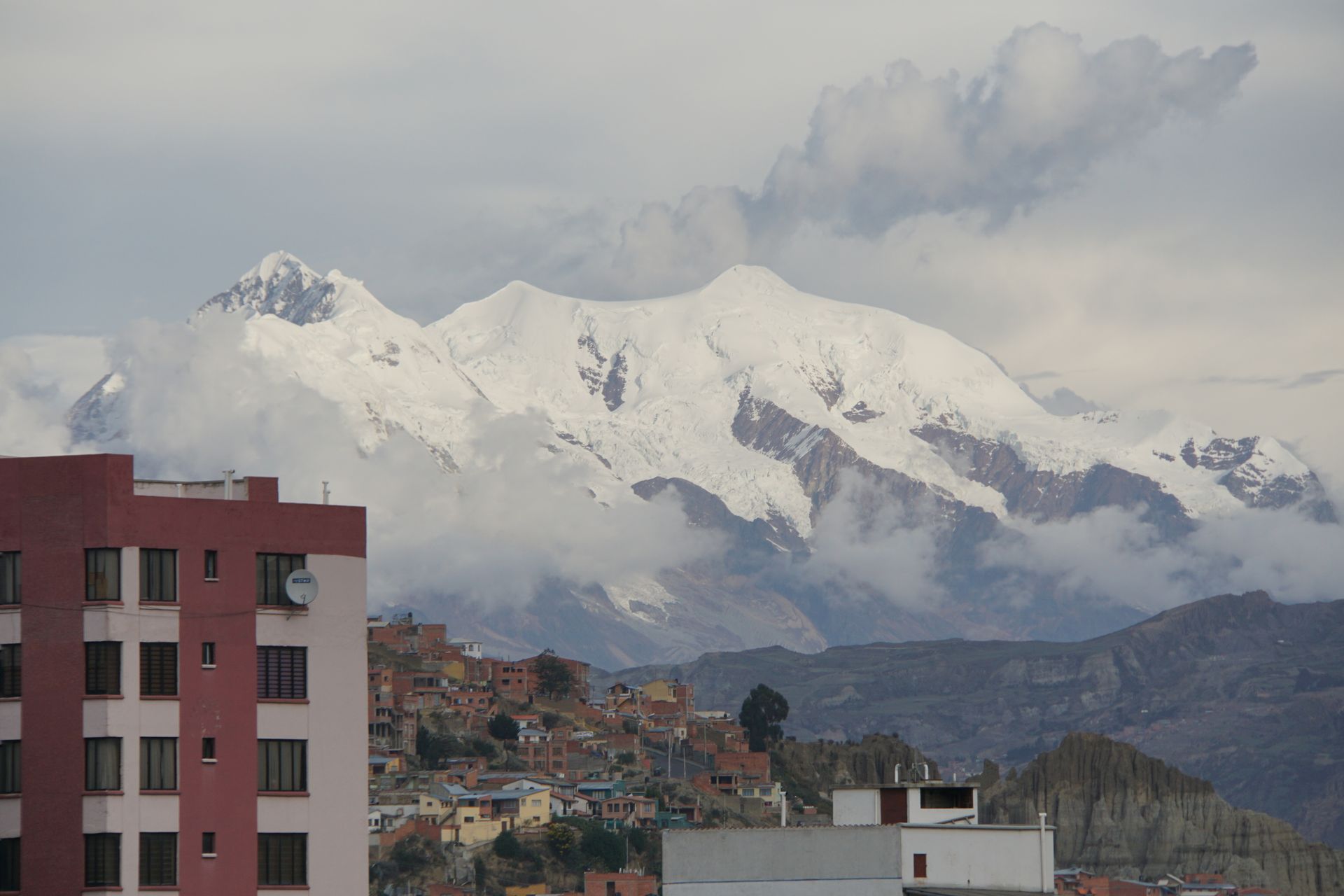
The Illimani majestically dominates La Paz
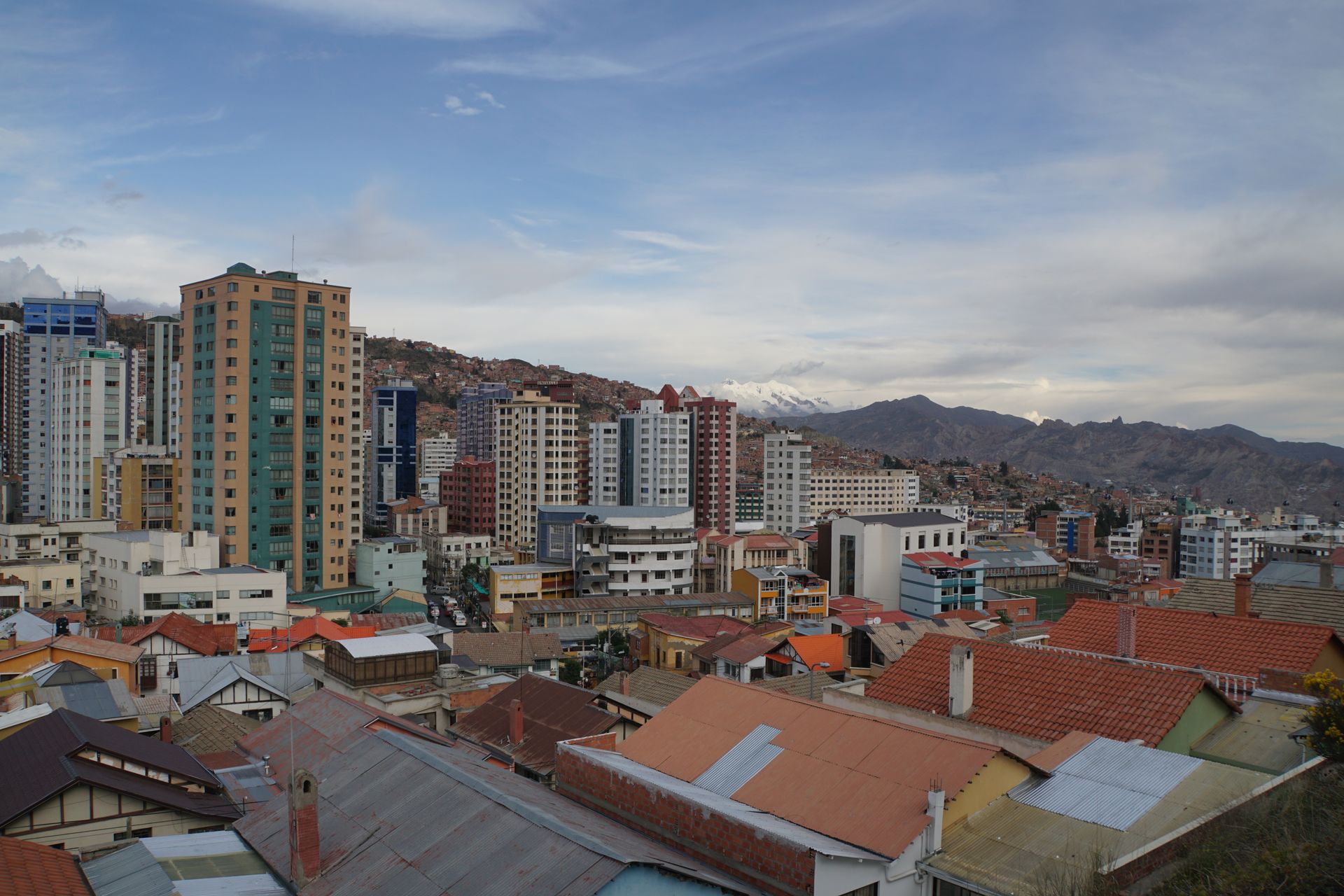
Some companies have settled in downtown
There is a clear correlation between residents' place of residence and their social status: the higher the house or apartment is located, the poorer the residents. The socialist government wanted to counteract this and launched a media-effective mammoth project: by 2020, 11 cable car lines are to connect the individual neighborhoods in La Paz - not only in geographical terms, of course. 8 lines are already in operation. Whether the several billion dollars will pay off in this noble sense remains to be seen, but we really like the cable cars, as they offer a magnificent view of the city for a very cheap fare (38 cents per ride).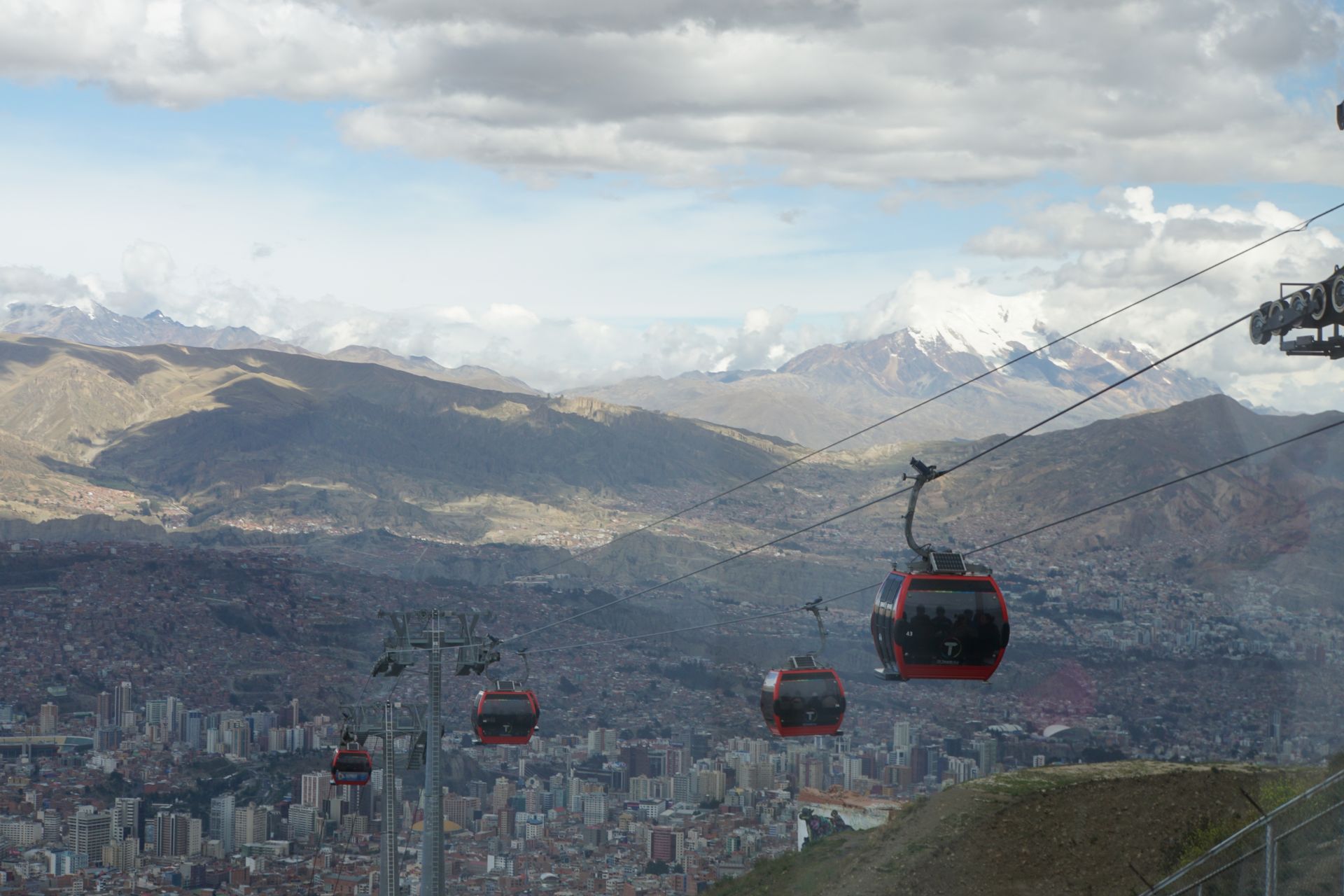
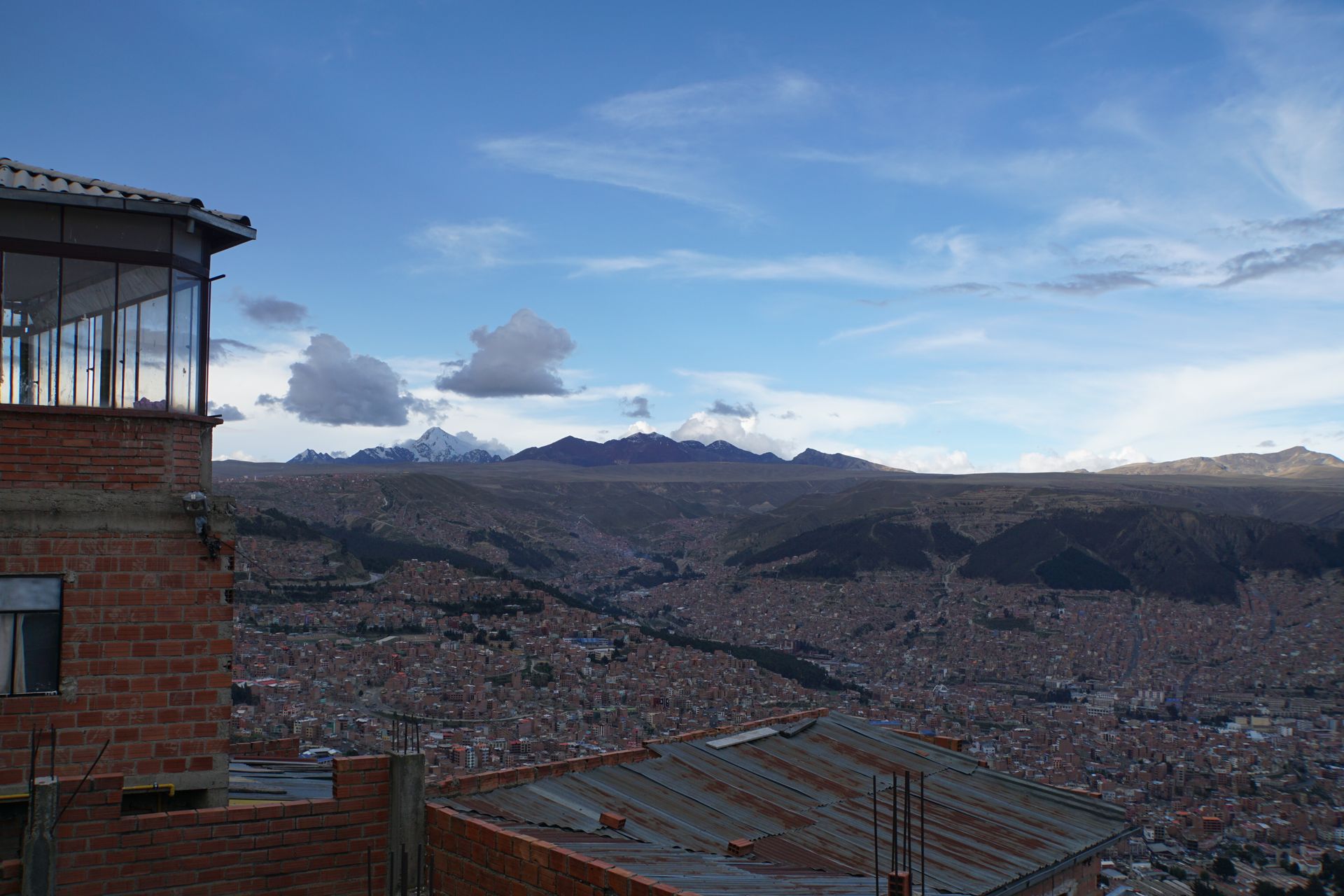
In total, we spend almost a week in La Paz. Contrary to our expectations - we have been warned in advance that La Paz is not worth more than two days - we really like it here. The lively, overwhelming bustle on the countless markets (or is it just one big market? The one in El Alto is said to cover 400 city blocks!) is very entertaining!
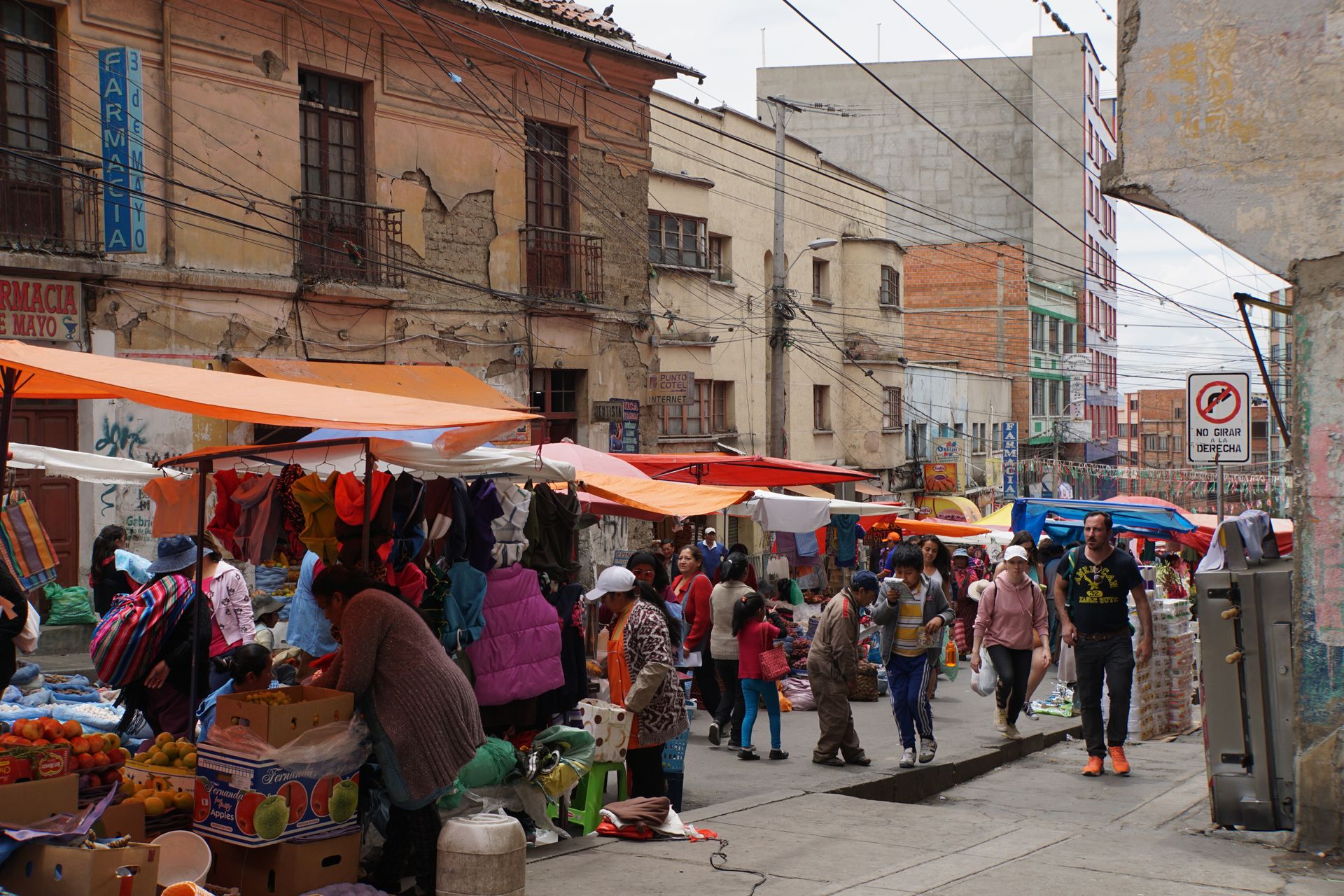
View of one of the markets in La Paz
We have now made it a habit to take a Free Walking Tour in each new city. Such a tour is also offered in La Paz - not completely free, as the organizers are obliged to pay taxes, but we can't complain about the price, which is the equivalent of €2.50. We start next to the legendary San Pedro prison. Legendary because it is said to resemble a city within a city. Inside its walls, there are different laws, and guards are only stationed at the entrance. Originally designed for about 400 prisoners, it now houses almost 1,500 people: prisoners live with their families, women and children. For a year now, the prison has been closed to tourists. Before, you could pay protection money at the entrance and watch the hustle and bustle. The tour was very popular with tourists because you could buy a white powder at the end of the tour. San Pedro has shops, restaurants, barbershops - everything you need for daily life. The more money an inmate has, the better he can live there. The big fish allegedly have the rooms with the best view, they have telephones, internet, televisions, and probably do not have to work for their money (protection money, drugs, etc.). The poor souls sleep in the corridors on the floor and have to find a way to earn their own money.
The lively drug trade between the prison and the rest of the city has put an end to the prison as a tourist attraction. Partly, probably unwittingly, tourists were used to smuggle cocaine cooked in the prison outside. How drugs can be produced in a prison? As I said, there are only guards at the entrance, and they are paid relatively poorly, so they are unlikely to refuse a little side income. In addition, everything can be bought inside the walls, and the children and women of the inmates provide a regular supply of raw materials as they are allowed to come and go as they please. Crazy! Apparently, there are still tours offered to the prison, but they are not official and should in no case be taken. Our guides tell us that two tourists took this 'tour' and were not allowed to leave the prison by the guards at the end, as there are no more tours. They had to pay almost $1,000 to buy their freedom again!
Aside from the prison, we learn a lot about the city and Bolivia on our tour. The main square, where today the huge presidential palace towers into the sky, stands like no other for the turbulent history of the Republic of Bolivia. Poor payment of the police, hardly functioning public infrastructure, poverty of the rural population, and corruption at the highest levels have repeatedly led to bloody uprisings. There are still over 40 bullet holes around the Plaza Murillo from an uprising in February 2003, when the military, the president's guards, and the police fought each other across the square. As a memorial to the dead on both sides, the bullet holes should not be closed.
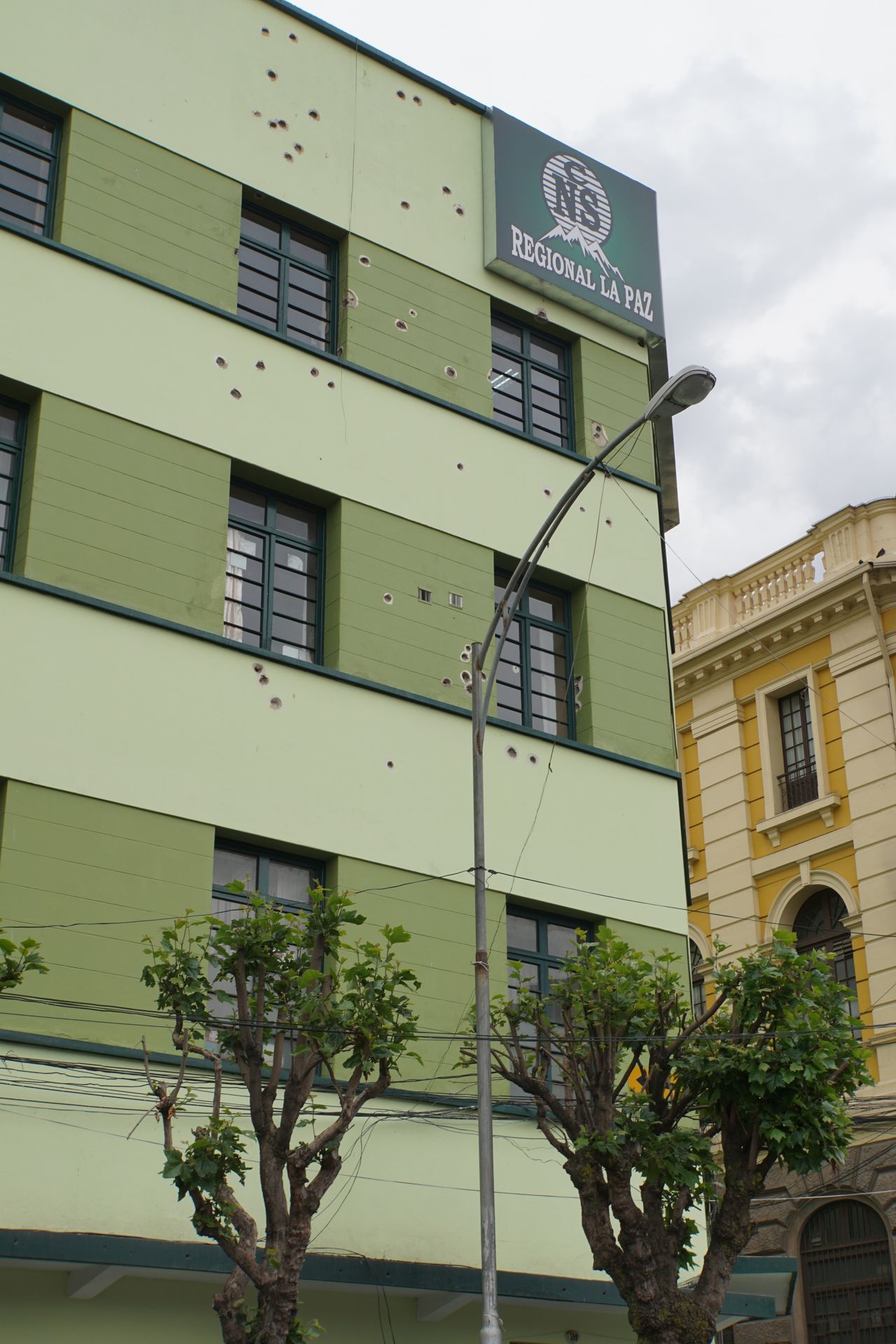
Bullet holes at the police headquarters
Of course, they were removed from the palace... they wash their hands in innocence.
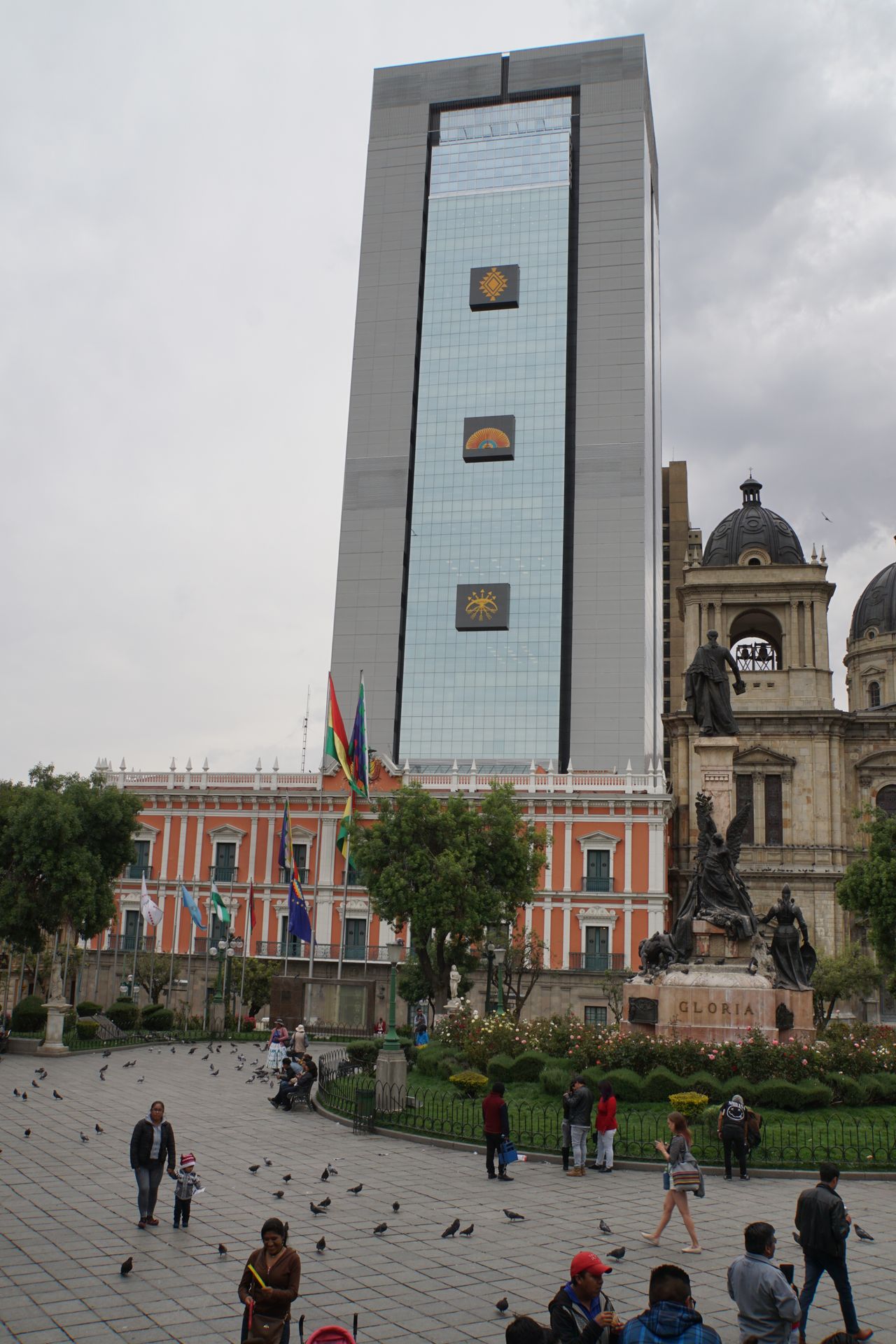
The multi-million dollar tower of the presidential seat reaches high into the sky - only the pigeons go higher
We also learn how superstitious Bolivians still are. That surprises us a lot. Especially in this large, seemingly cosmopolitan city. We walk through the Witch Market, where you can buy all kinds of offerings for all imaginable ancient gods and spirits. From herbs to alcohol and sweets to dried llama fetuses, everything is available. The fetuses are placed in the foundation of a new house as an offering to Pacha Mama, the Mother Earth, so that she tolerates the house on her and does not let it collapse. We learn that one llama is not enough for large construction projects... a human must be sacrificed there. Alive, of course, because Pacha Mama is supposed to take the life of the victim. Whether this was just a scary story from our Free Tour guides or something that is actually true - who knows?
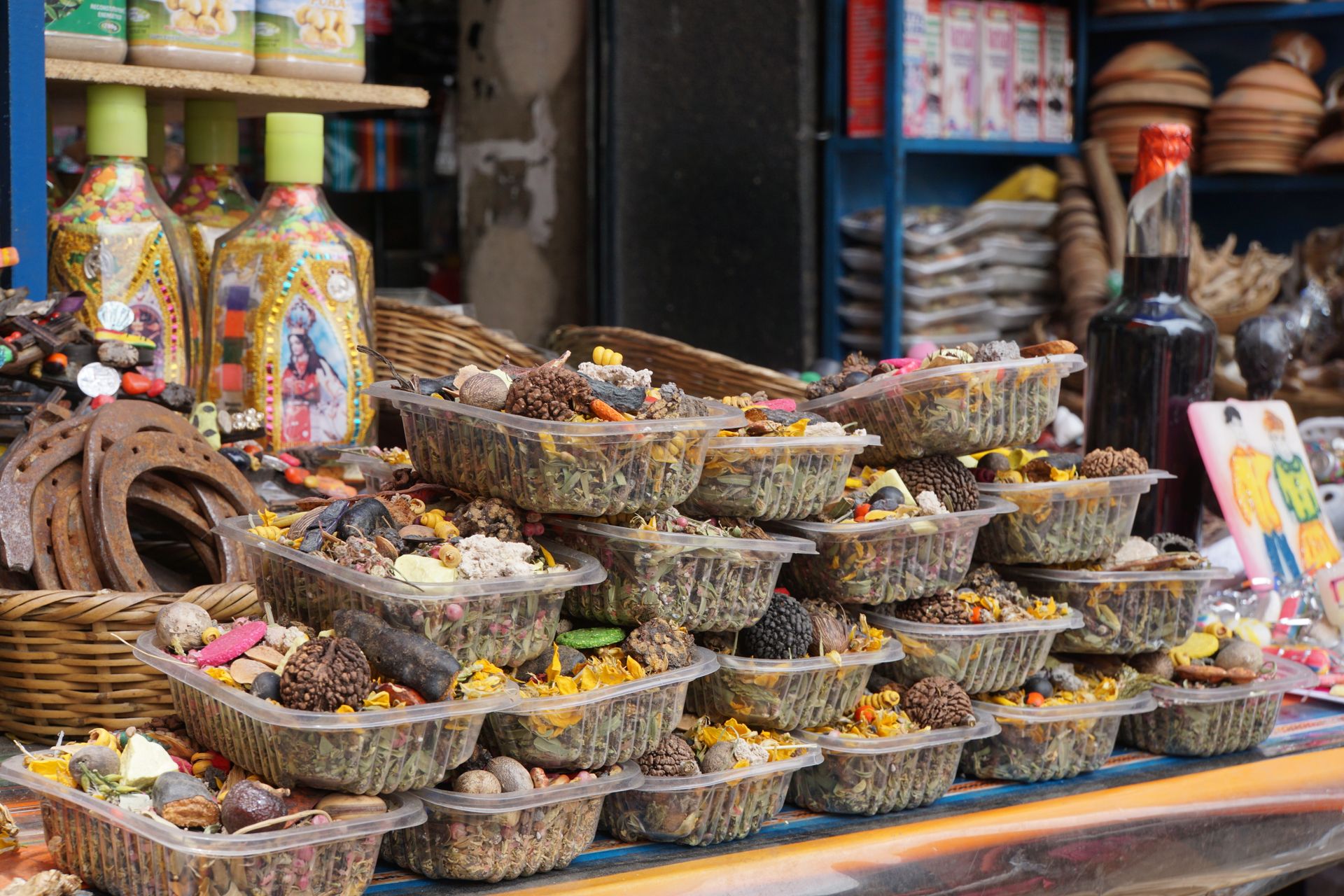
Offering bowls at the Witch Market
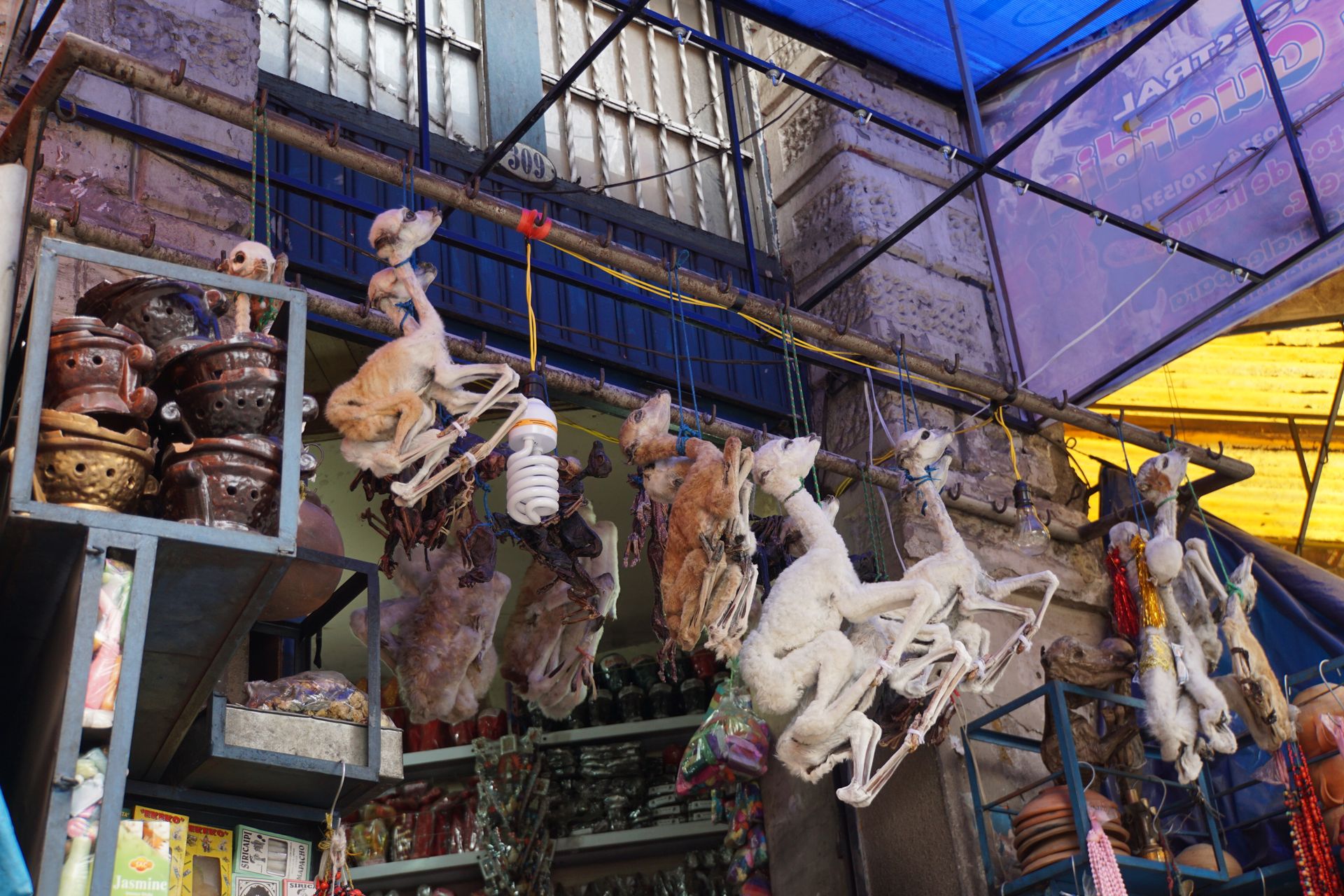
The Pacha Mama offering allegedly only works with stillborn llamas - since Pacha Mama has already taken this life
The next day, we book another tour to the cemetery, to El Alto, and to the Cholita Wrestling with the same organizers of the city tour. Cholitas, these are the indigenous ladies in their traditional costumes: a voluminous skirt, colorful tops, long braided hair, and the classic bowler hat. Even though it seems to be a pure tourist event, it's still a lot of fun. The young women make every effort. The referee takes sides again and again, we loudly cheer for the disadvantaged fighter and repeatedly demand that the referee be replaced ('Cambio' is the only call we can understand ;-) ) Our personal highlight is the indigenous lady behind us. She sits relaxed in the rows, knitting a sweater, and enjoys the scene. At some point, however, she gets really angry and throws food and water at the referee and two fighters, and shouts loudly. It's wonderful!
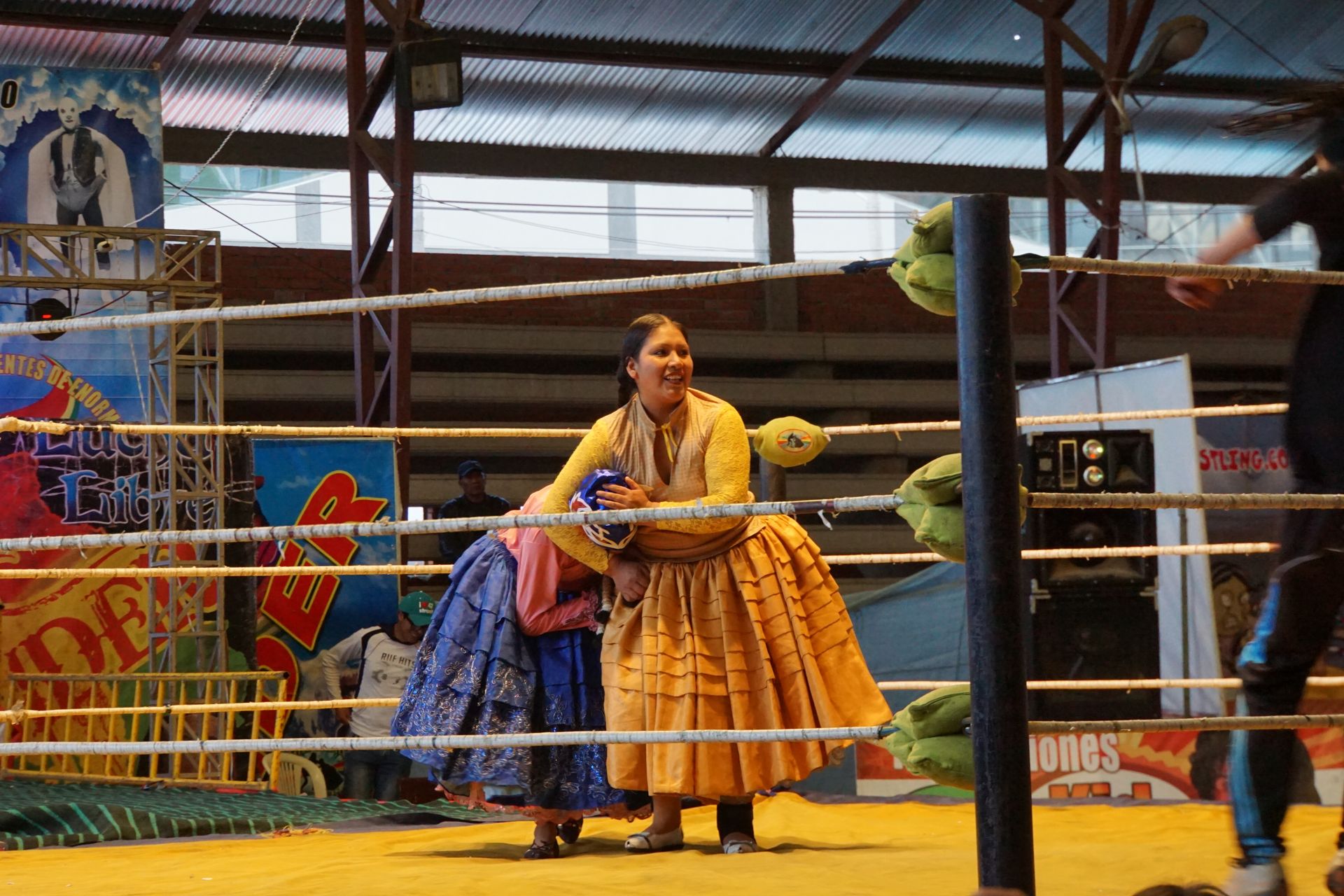
They have taken off their hats before - they can cost up to $1,000!
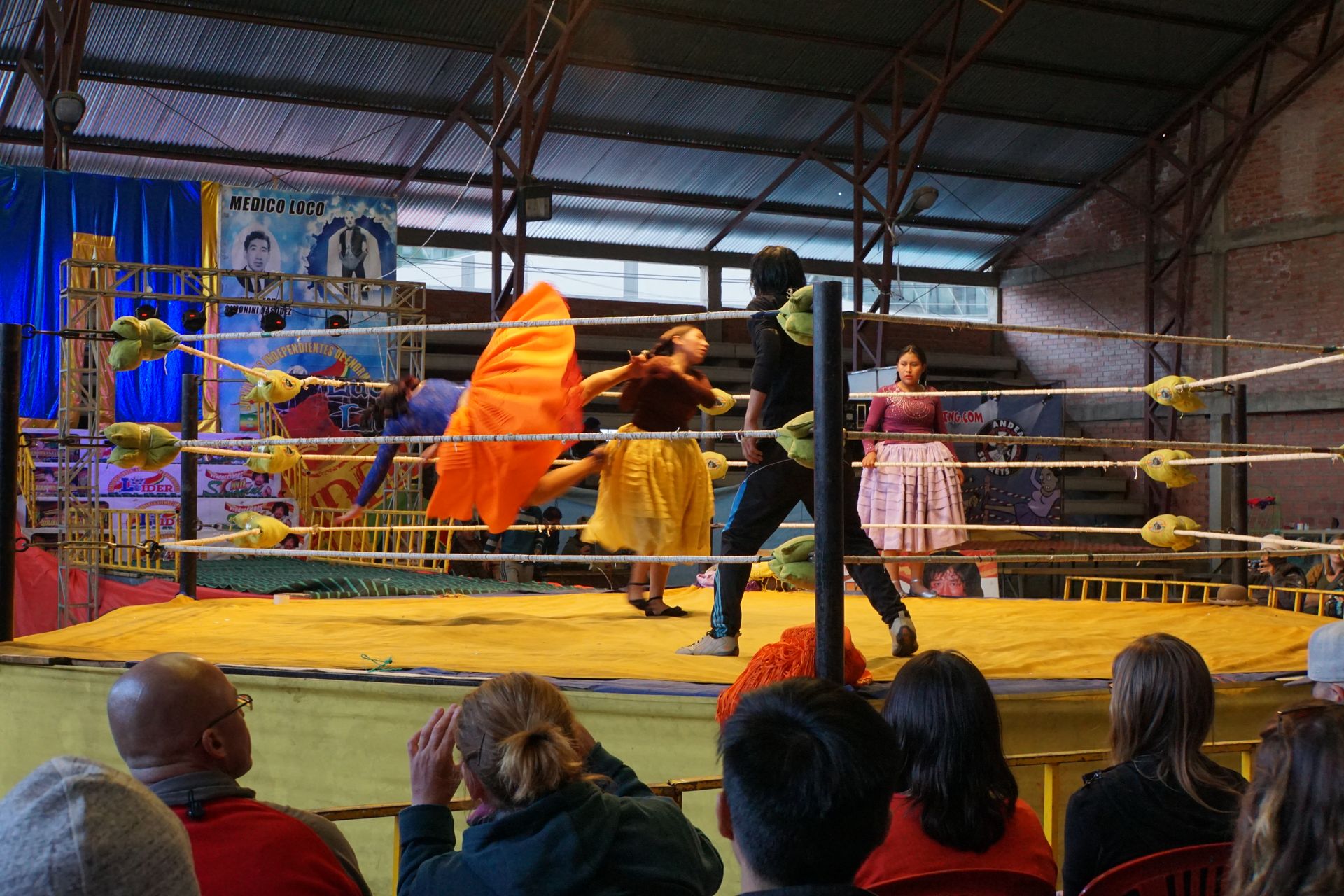
The Cholita Wrestling league is officially recognized and gaining popularity. Moreover, the social and cultural aspect should not be underestimated: as amateurish as the whole event may still seem, the Cholita League stands up for women's rights, supports local women's shelters, and with just the idea of a strong, fighting, and self-supporting woman, it creates a new understanding for women in Bolivia who are still heavily oppressed and exposed to domestic violence.
We have done a lot in La Paz and are planning three more trips in the surrounding area. First, we head to the Tiwanaku Temple, which is a good hour's drive from El Alto. The once significant site of a pre-Inca culture is now 15 km away from Lake Titicaca, but during its heyday, it had its own harbor on the shore of the shrunken lake.
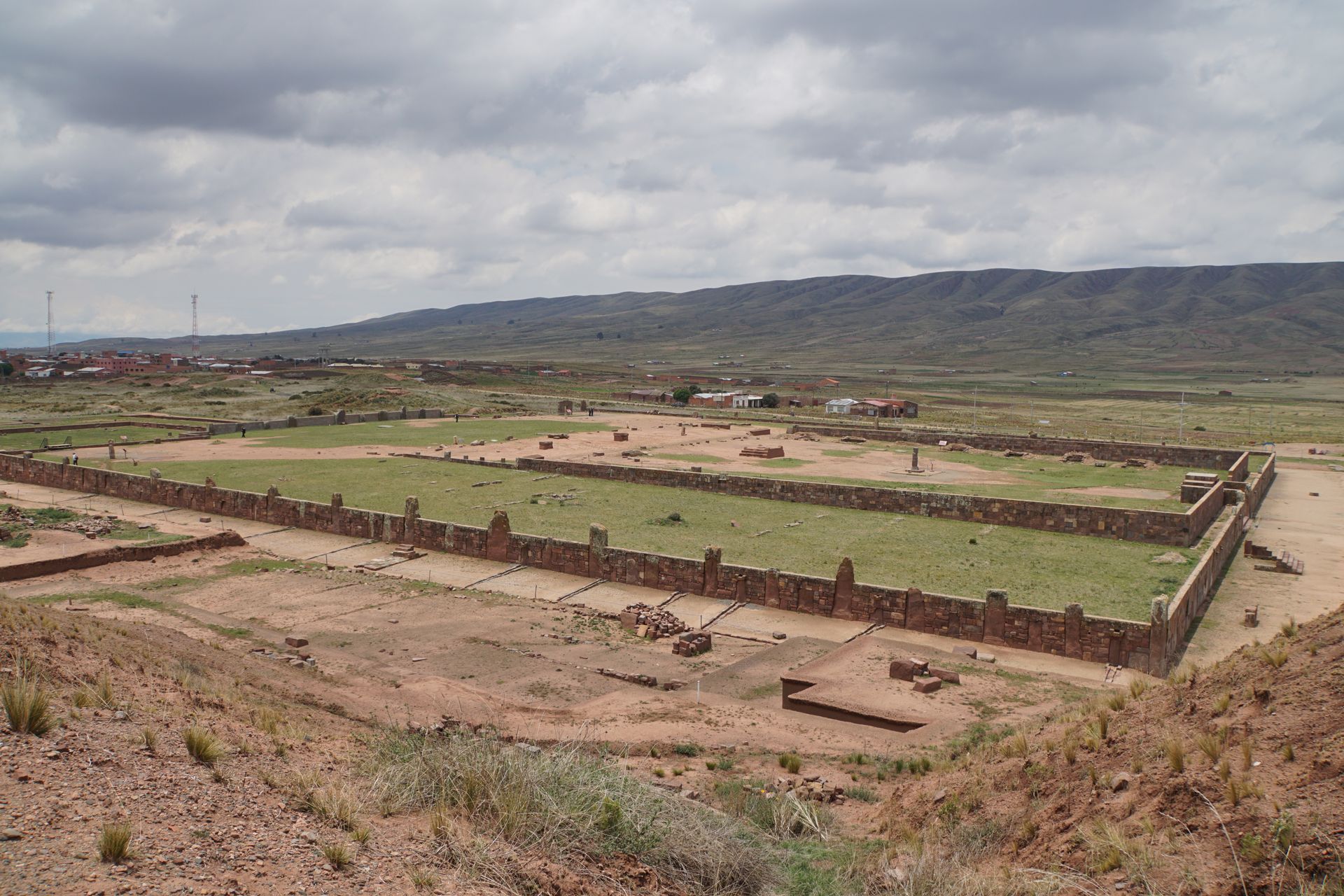
The temple complex was surrounded by fertile fields. A drainage system with rainwater provided the fields with water year-round and created its own agriculture-friendly microclimate on the 4,000m high Altiplano of the Andes, which counteracted frost, among other things.
The Tiwanaku culture supposedly existed between 1500 BC and 1200 AD, with its heyday around 900 AD. The inhabitants of the temple city were already highly developed. For example, they used metal buckles similar to those used by the Romans to connect the individual stone blocks of their buildings. To this day, scientists are puzzled as to how the Tiwanaku managed to grind the stones so perfectly and accurately that perfect 90-degree angles and completely smooth surfaces were created. This even surpassed the Inca. Their main temple was pyramid-like in structure, with a large basin filled with rainwater on the highest plateau. In this basin, the constellation of the Andean Cross was reflected in the water on May 3rd each year. The surrounding complex served as a large calendar. For example, the famous Sun Gate, which was built from a single, 12-ton block of Andesite, still shows the winter solstice (the day when summer begins in Bolivia). The Sun Gate is said to have been completely gold-plated back then! Archaeologists found traces of gold on the stone.
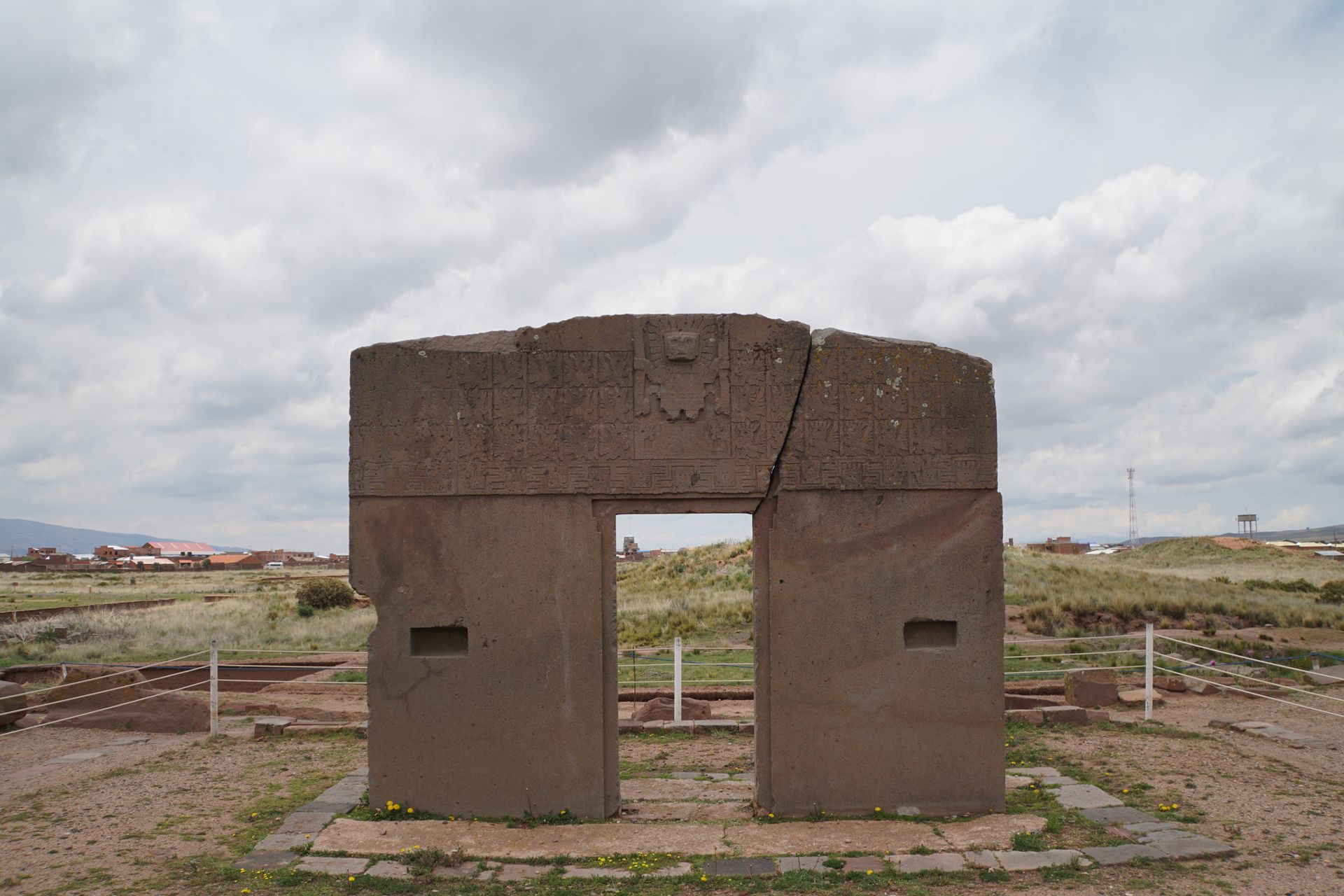
The Sun Gate with an engraved deity and pumas, symbolizing the cycle of life
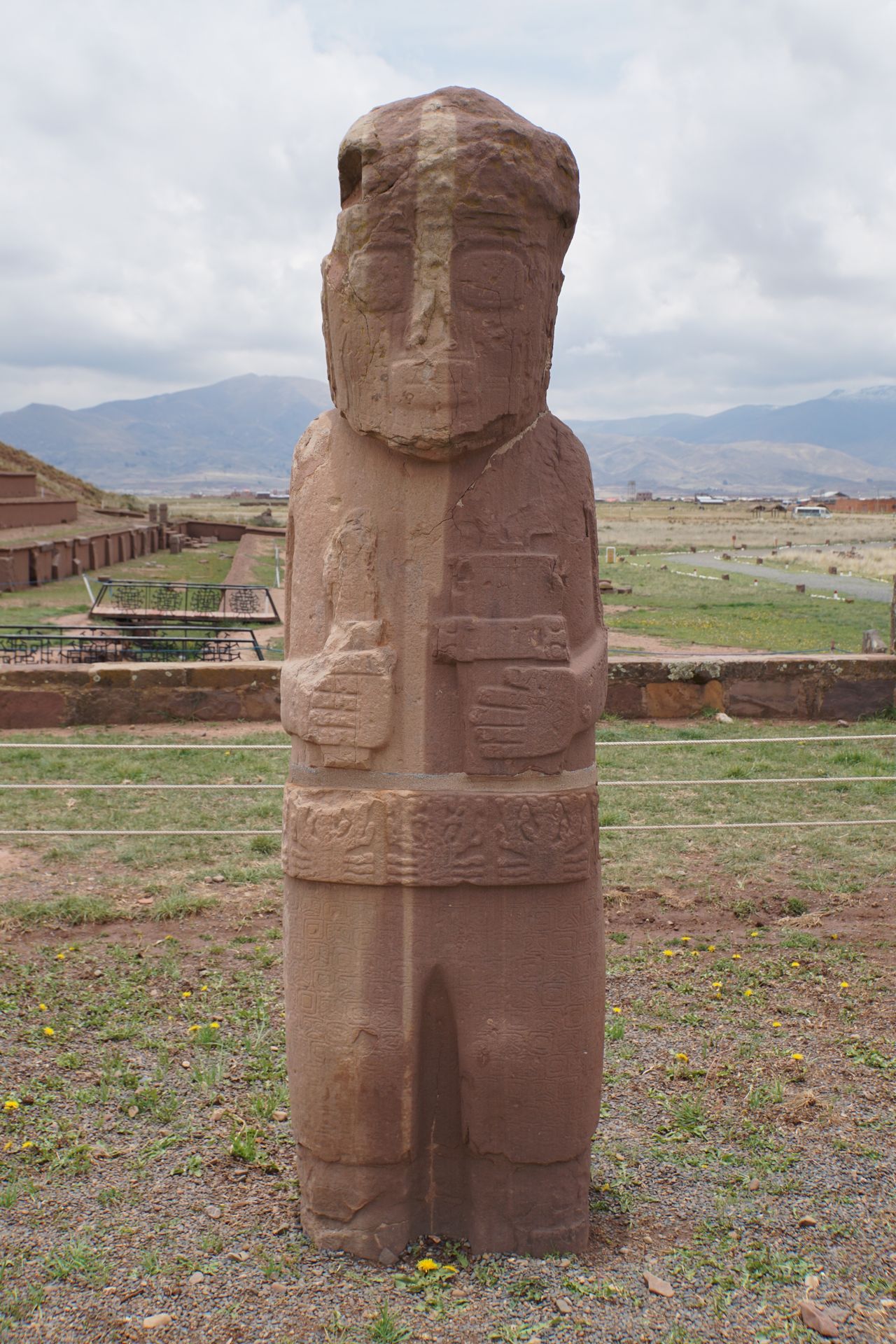
The Tiwanaku culture is also famous for its shaman cult. Children born with disabilities were considered sacred and prepared for life as intermediaries between humans and gods from birth. Their heads were bound and deformed with wooden planks, elongating and tapering the skull. Since this type of skull deformation brings pain and pressure to the head, the Tiwanaku learned to open the skull bone and release pressure regularly. This also led to the advancement of other medical procedures, and they became skilled healers and doctors. Much has been lost from this culture since there was no writing at the time and little is preserved. The Tiwanaku fell victim to a drought at the end of the first millennium, then came the Inca, and then the Spaniards. The temples were destroyed, and the language of the Tiwanaku was forgotten. This makes the work of archaeologists extremely difficult. Only the Water Temple is still original, as it was buried in earth and below normal ground level. This is also where the largest monolith was discovered, which is now in the adjacent museum but unfortunately cannot be photographed (we refer to Wikipedia, Bennett Monolith: https://de.wikipedia.org/wiki/Bennett-Monolith).
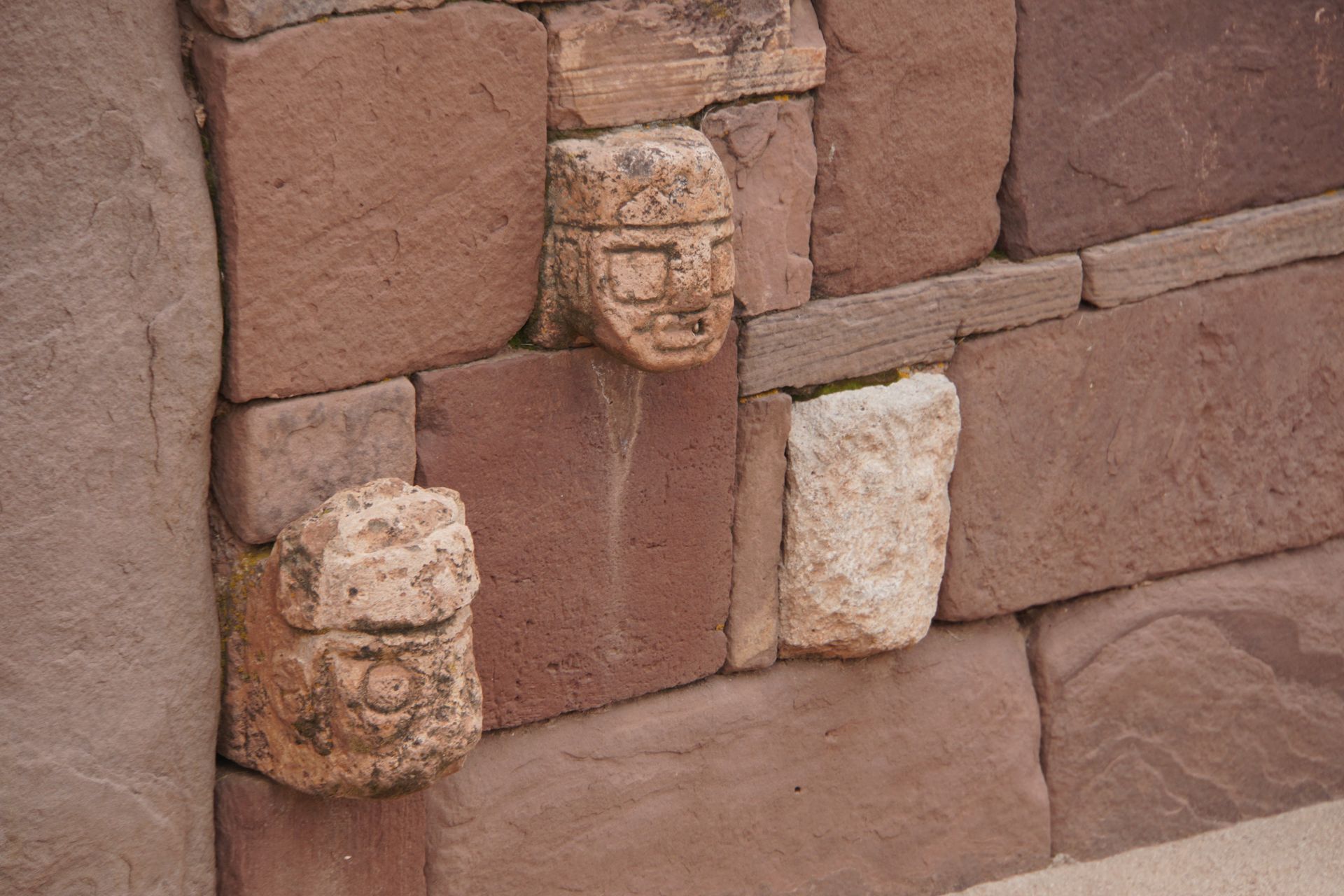
There are over 40 different stone faces to be discovered in the Water Temple, probably representations of important shamans
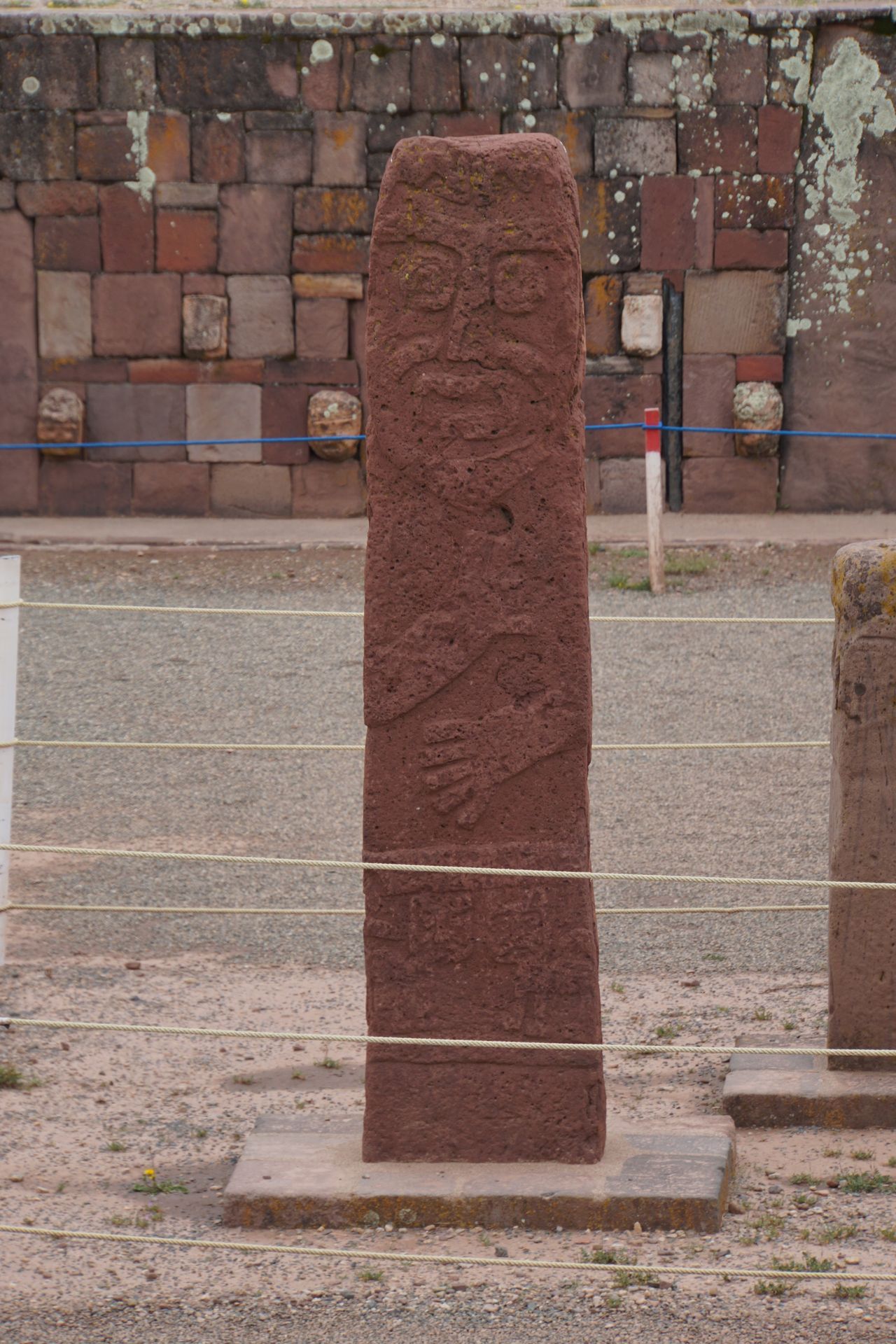
Our second trip from La Paz takes us to the Death Road - Camino de la Muerte - where we descend 67km by mountain bike. until December 2007, the Camino de la Muerte was open as a two-lane road and was considered the most dangerous road in the world because it often only has room for one vehicle and numerous car accidents occurred here. In addition, the edge of the road is lined with steep cliffs and slopes up to 500m deep, so a fall can hardly be survived. Before 2007, 200 to 300 travelers had accidents on the road every year (Wikipedia). In addition, due to rain, landslides and rockfalls can occur at any time, further increasing the risk for car and bicycle riders. The road was built in the 1930s by Paraguayan prisoners of war in a very short time. After completing the road, these prisoners of war were thrown down the cliffs. Not very nice of the Bolivian government and also a reason for the creepy name! On the road, you pass, among other things, a monument to five revolutionaries who were executed on the cliffs in the 1930s, and the house of a German Nazi war criminal, who hid from French justice in the Bolivian Yungas. All this contributes to the deadly image of the Death Road.
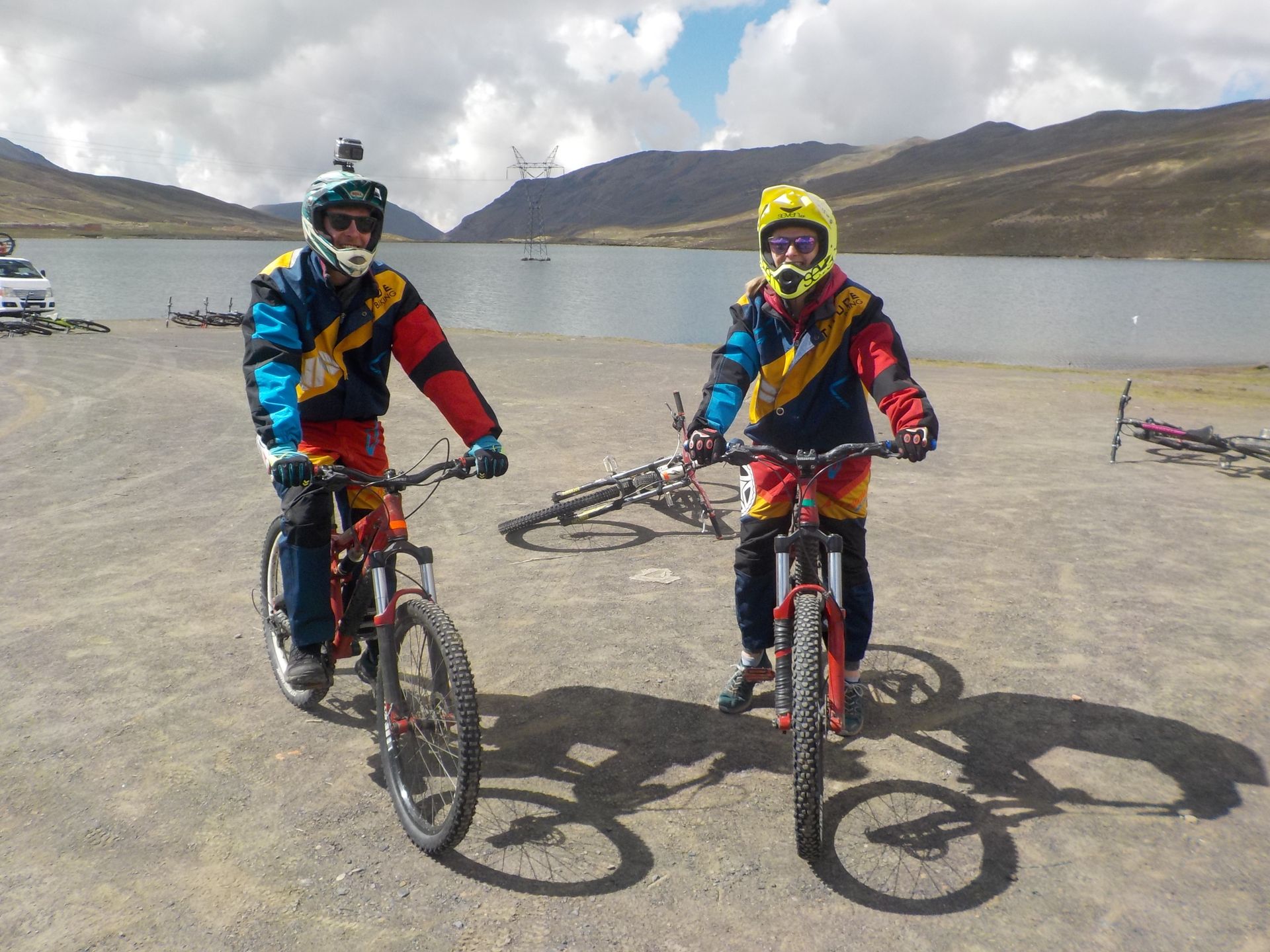
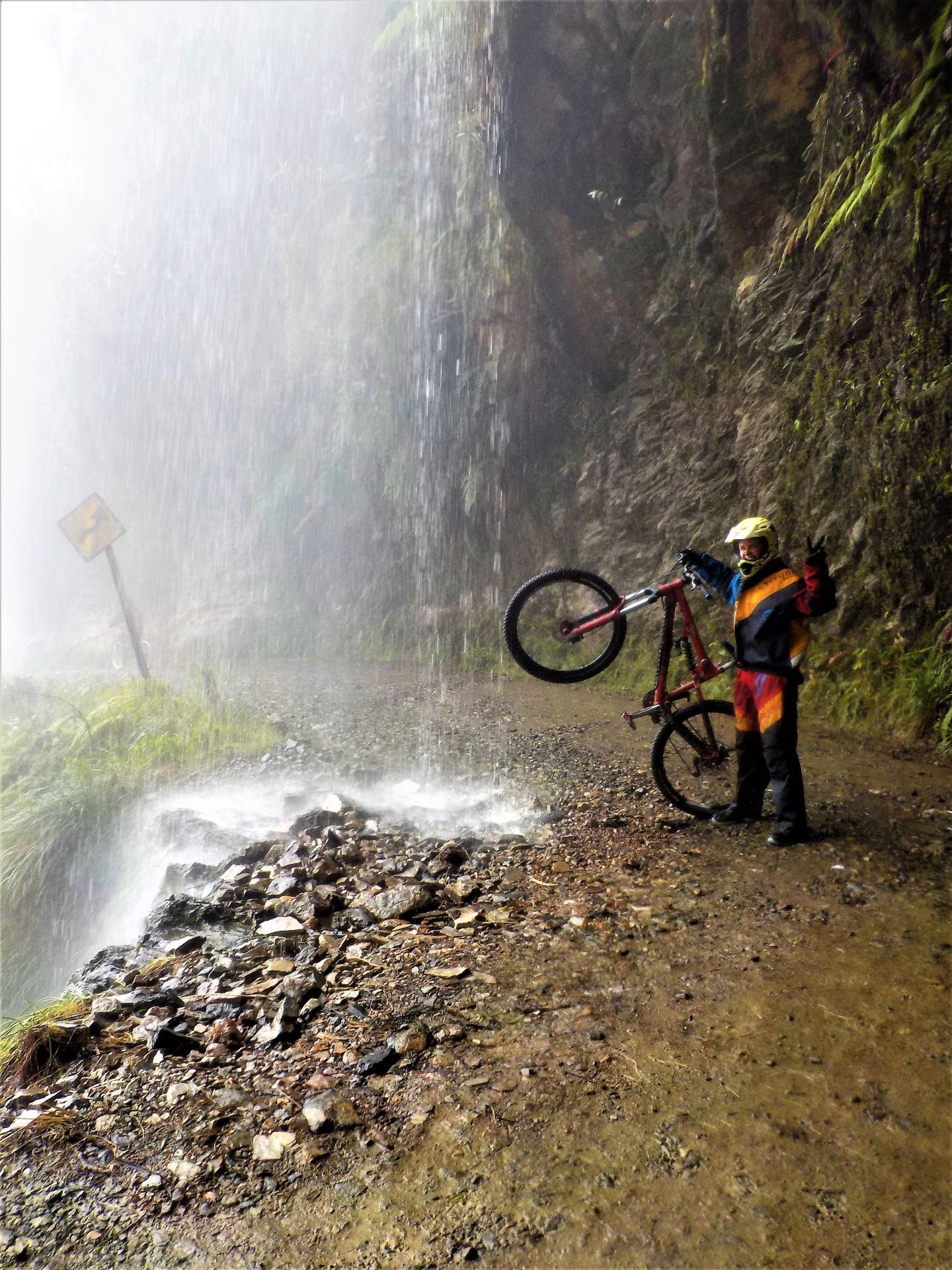
Today, the Death Road is mainly used by mountain bikers as an attraction and is frequented by around 30,000 tourists annually. Since 2007, there has been a modern, two-lane bypass that diverts car traffic during the day. Therefore, the death toll has also dropped significantly. On average, one cyclist or guide has an accident per year. Last year, a guide apparently died while trying to take a photo of his group. He stepped back a bit too far... In the evenings and at night, the road is open to car traffic again. According to our guide, two trucks crashed on the Death Road last year, which were traveling with their families, resulting in fatalities. Both drivers were apparently severely under the influence of alcohol. Driving in Bolivia is actually a great risk, mainly due to alcoholism.
For us cyclists, the route is about 67km downhill. First, we have to tackle the modern road, and then we go to the 'real' Death Road, which is a 1.5m wide gravel road in the middle of the Yungas. You descend from 4,670m to 1,200m, crossing small streams and passing under waterfalls. Laura's tip: build up speed before riding through the river, otherwise, you will get wet feet. During the descent, you pass through almost all of South America's climate zones. At the top, it is still quite cool, and at the bottom, you are greeted by a tropical climate in the rainforest of the Yungas. We can recommend the tour to everyone! You can ride at your own pace, and it's just a lot of fun.
On our last day, before taking the bus to our next destination in the evening, we hike in the Valle de las Animas, the Valley of the Souls. Allegedly more spectacular than the Valle de la Luna, the Valley winds its way along a long-dried-up riverbed in the southeastern part of the city. The erosion caused by wind, weather, and the vanished river has created a bizarre landscape where rocks rise like needles into the sky.
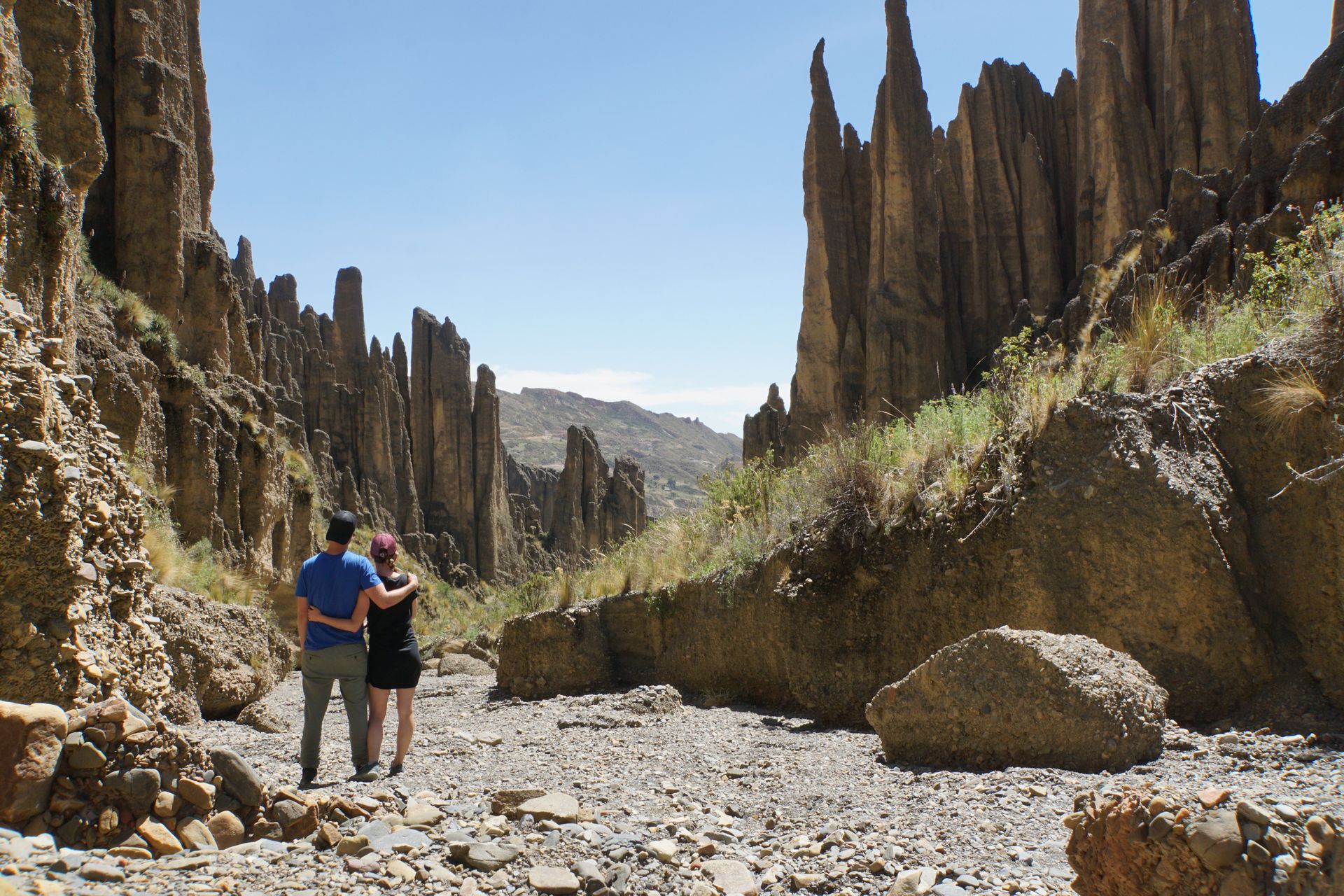
Initially, the first people to enter this valley interpreted the rocks as the souls of long-forgotten people and thus gave the valley its name. We are also very enthusiastic about the beauty of this place. The weather is wonderful, and by 10 o'clock, the sun is already scorching mercilessly on our heads. In fact, we are the only hikers on this day. Only one other tourist couple makes its way to the valley, but they stay at the entrance while we set out to find the end of the valley. It may be revealed that after almost three hours over rocks and stones, we run out of breath. We are also warm, and we still have to catch a bus ;-) The trip was definitely worth it. After the hustle and bustle of the city, the dead silence in the narrow valley is really good.
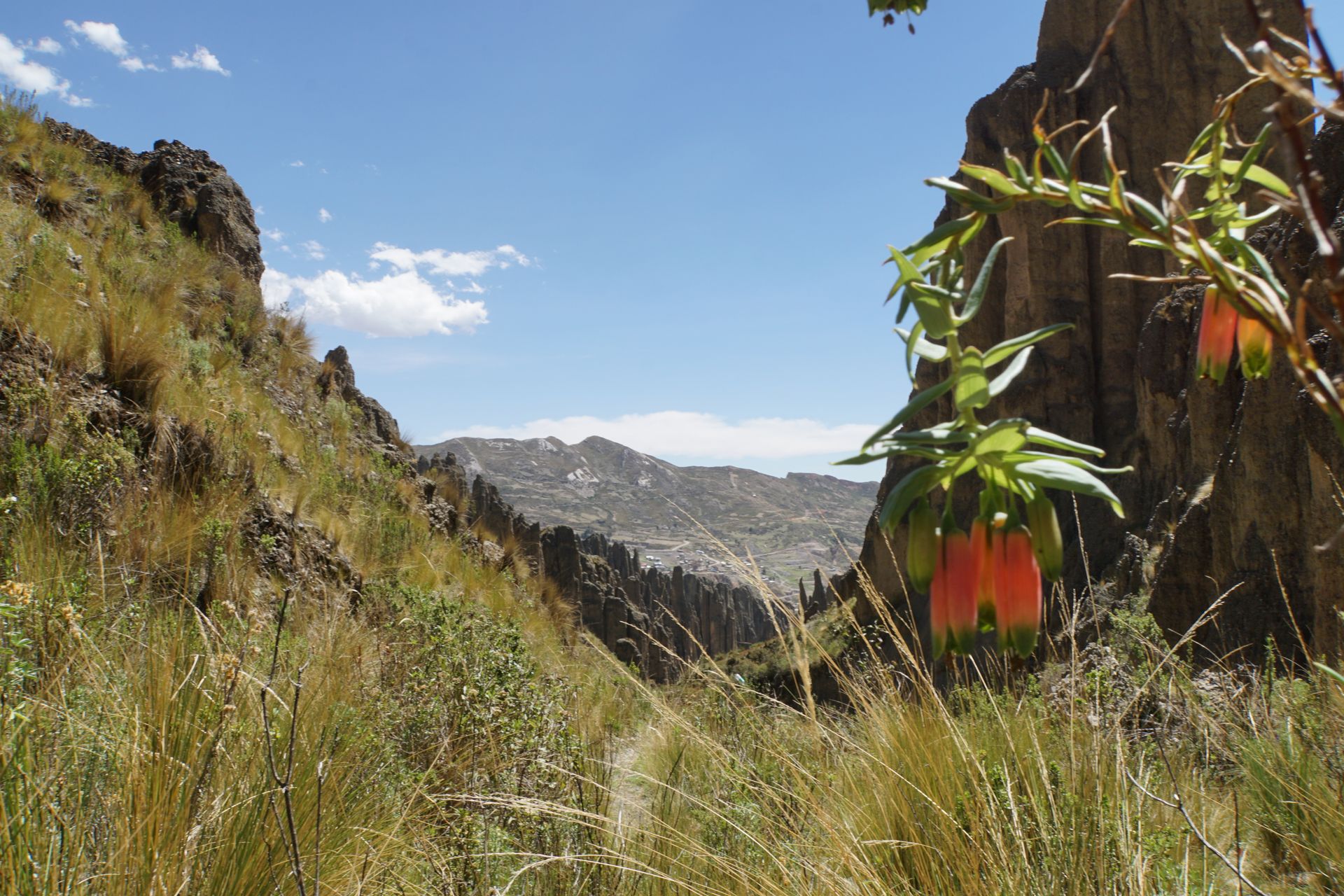
So our time in La Paz already comes to an end. We are drawn further to Sucre, the official capital of Bolivia, where we plan to take a language course.
Претплатете се на билтенот
Одговори (2)
Martina
Vom Wrestling über die Todesstraße zum Tal der Seelen, ein einziges tolles Abenteuer! Jede neue Folge ein Genuß!!Hallo, bin erst jetzt zum lesen gekommen. Hut ab, dass ihr die Todesstraße hinunter gestürzt seit. Hauptsache nichts passiert und ihr hattet Spass. Vielen Dank für den tollen und ausführlichen Bericht. Es ist wirklich ein Genuss, da kann ich mich Martina anschliessen.

Извештаи за патување Боливија
